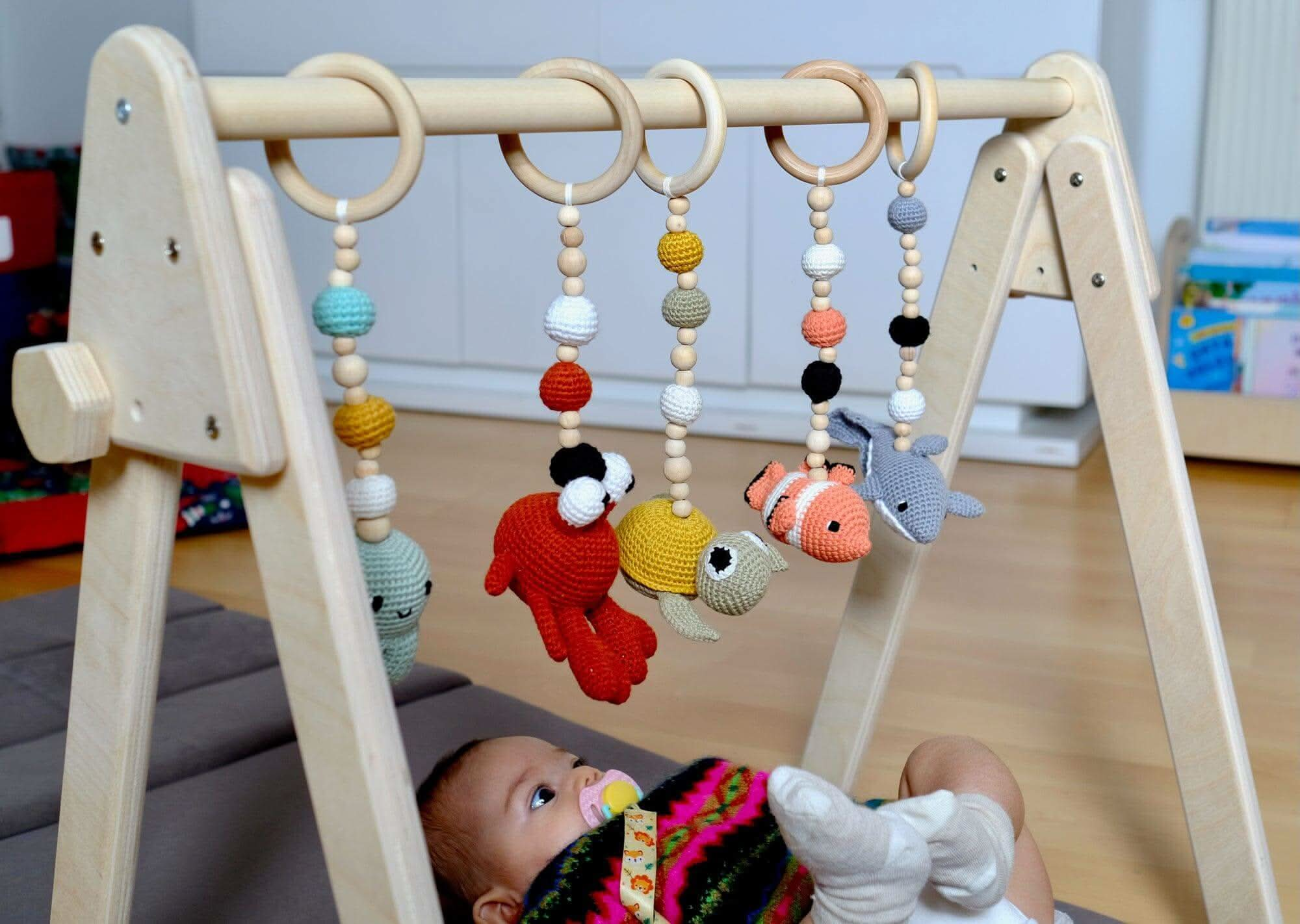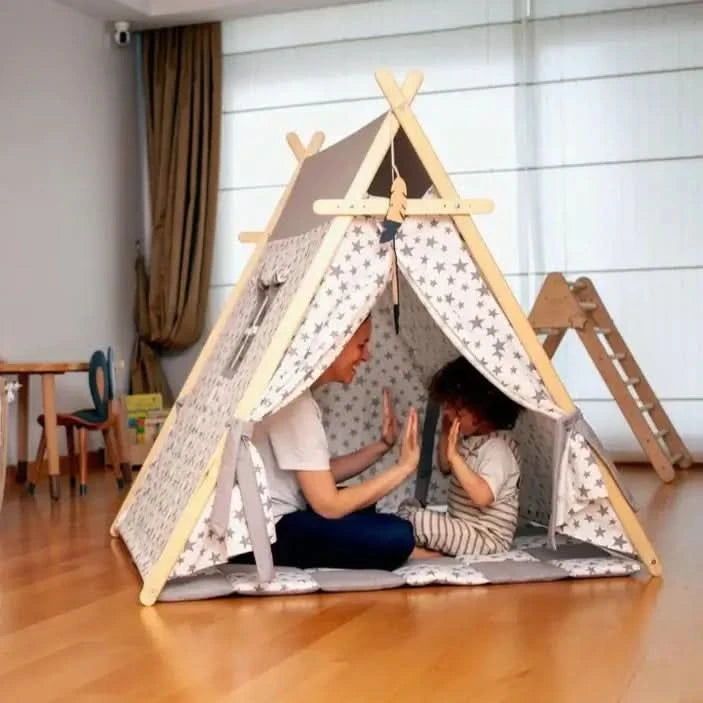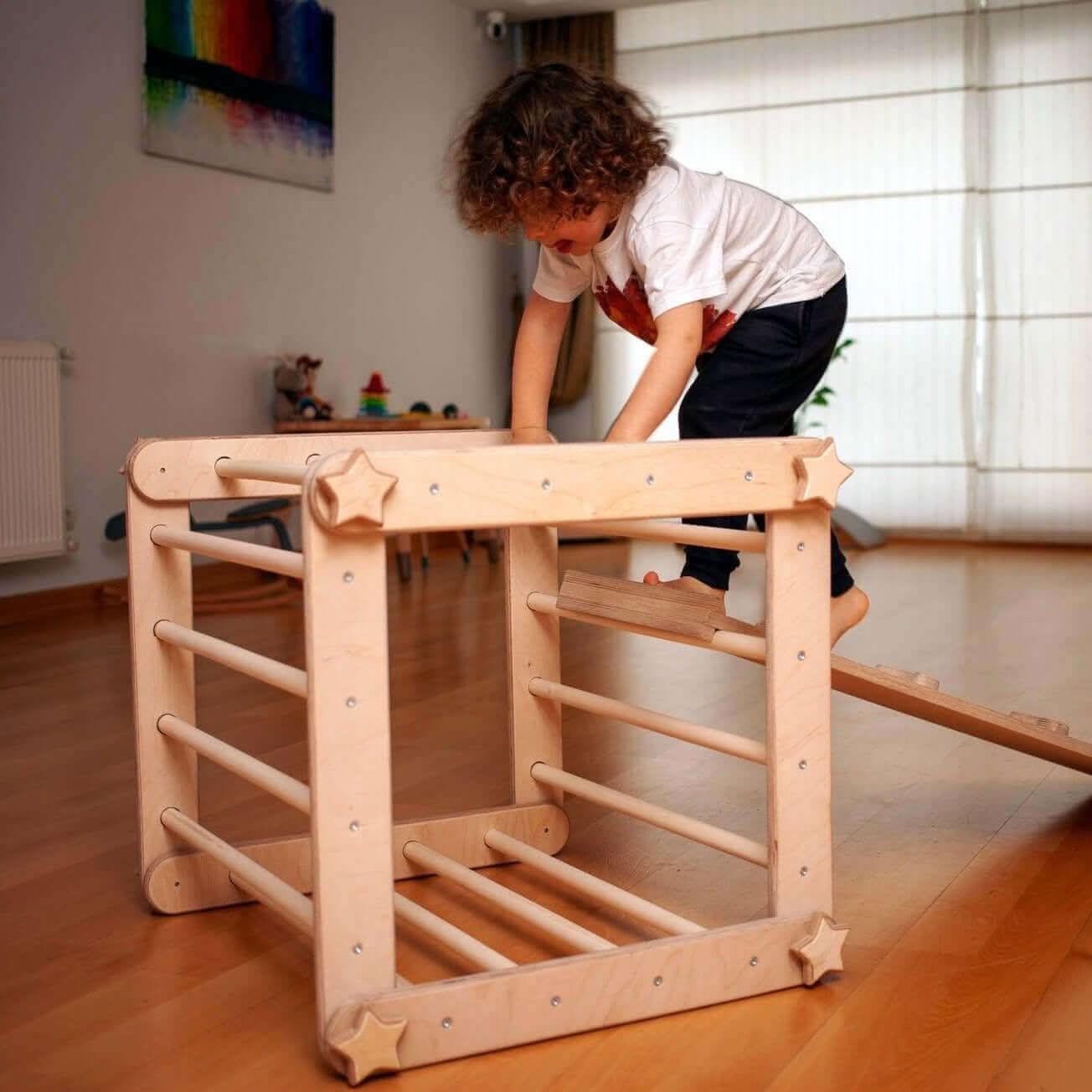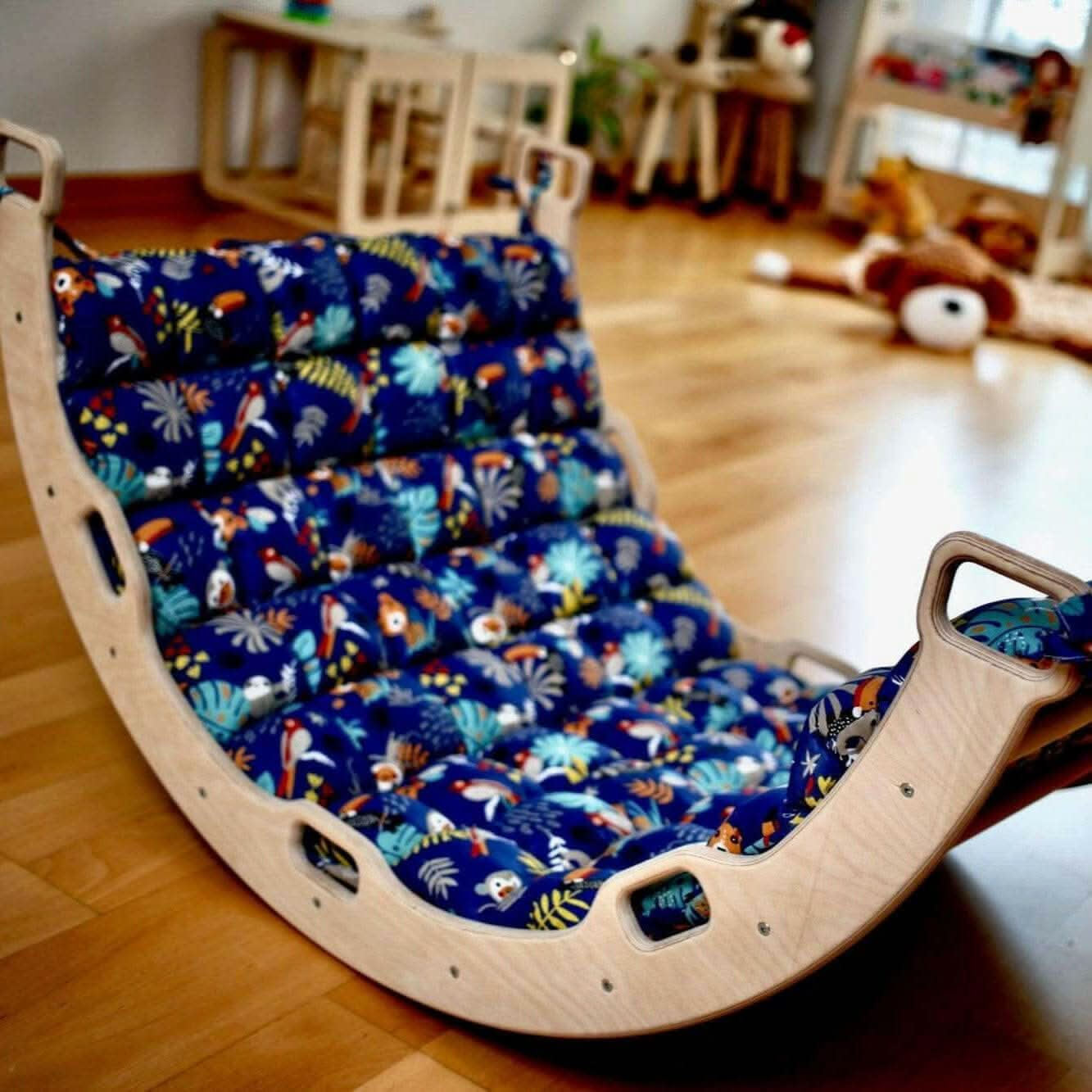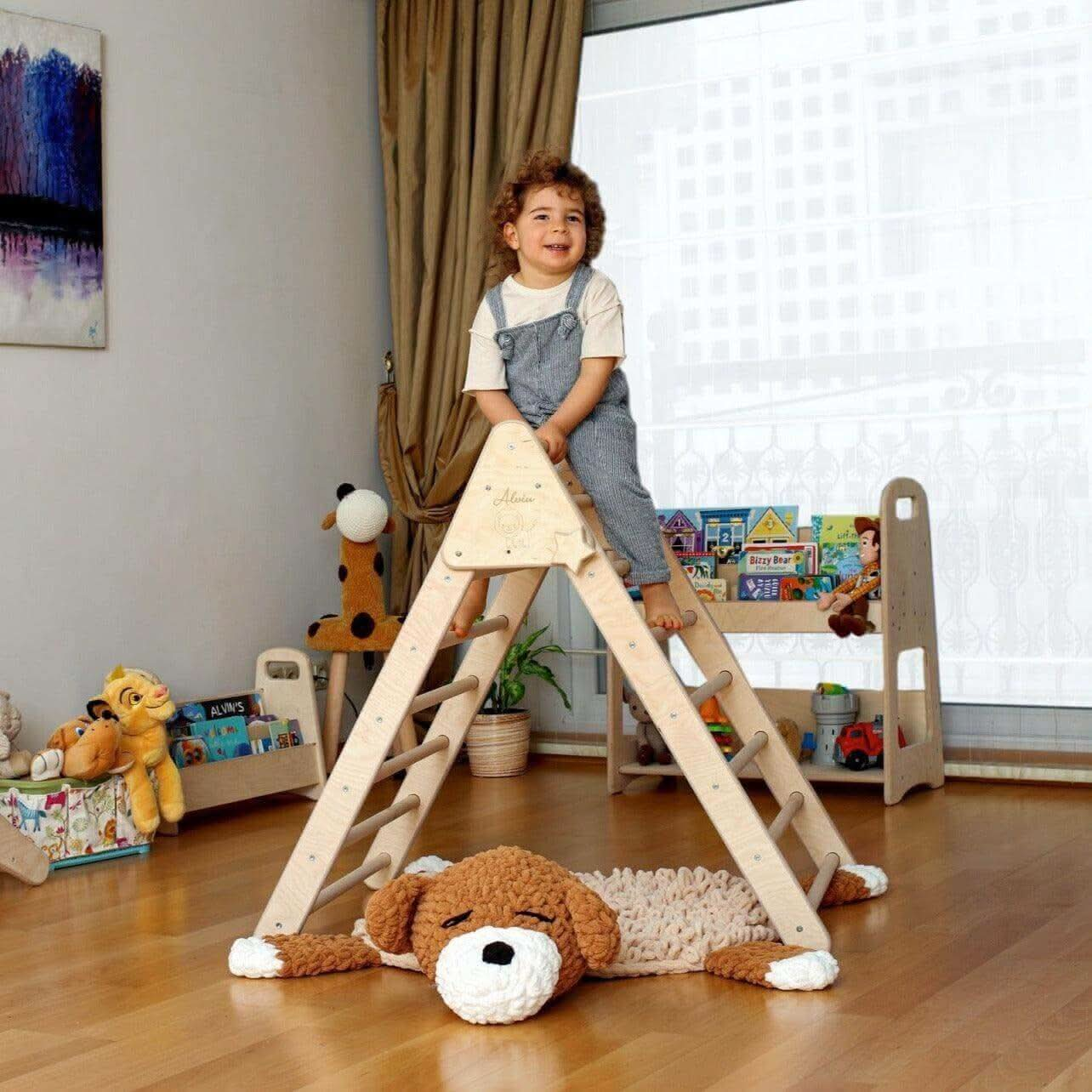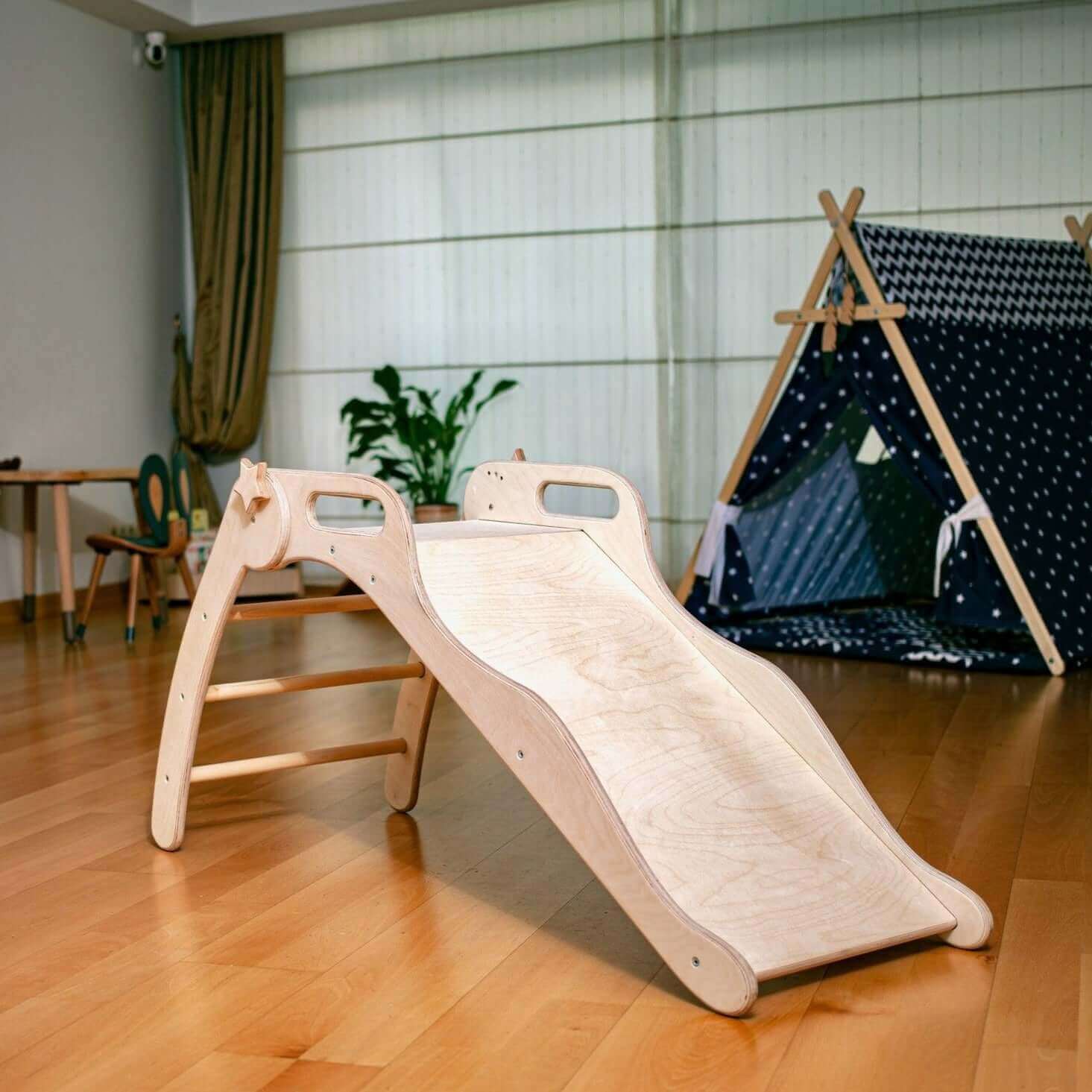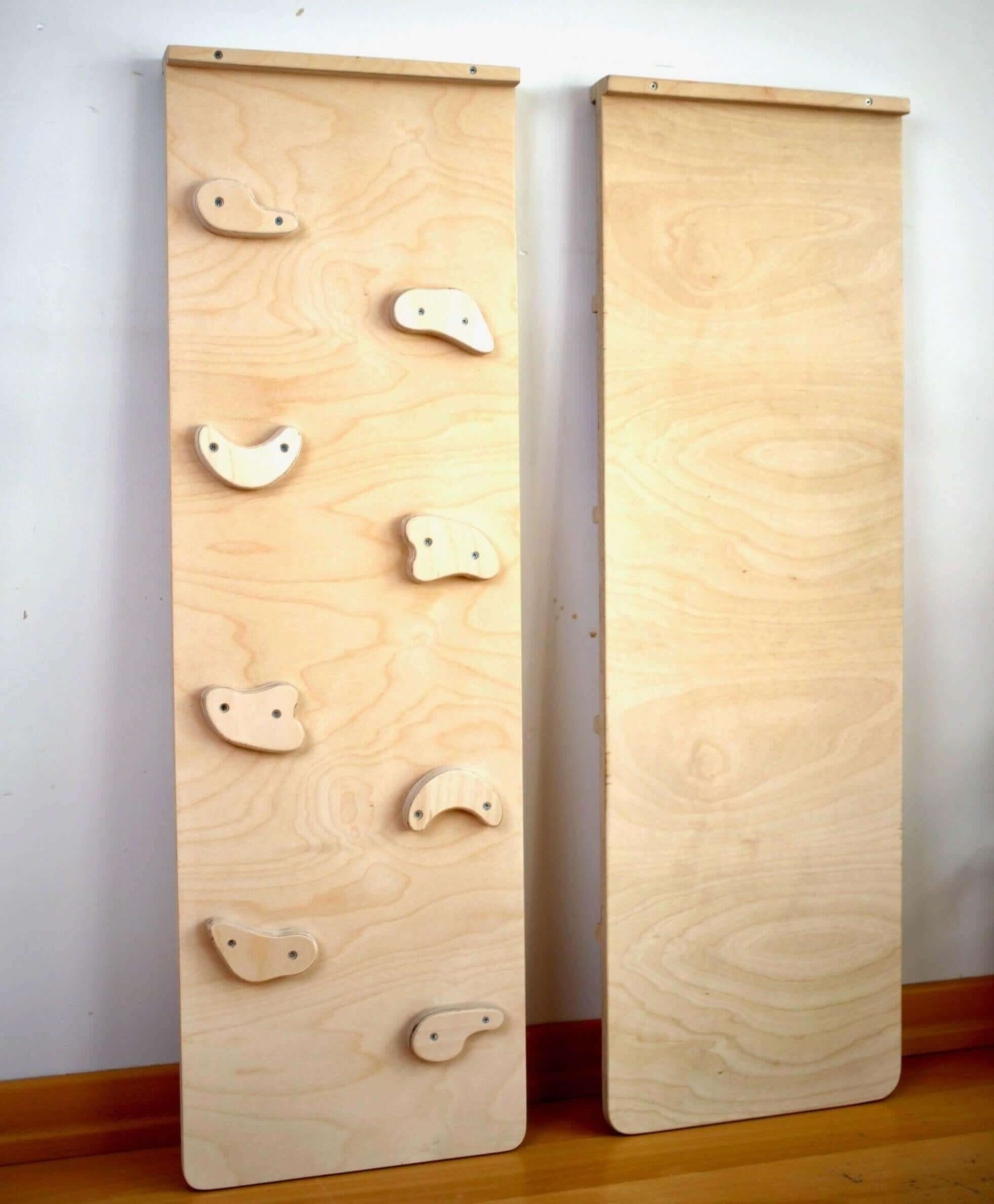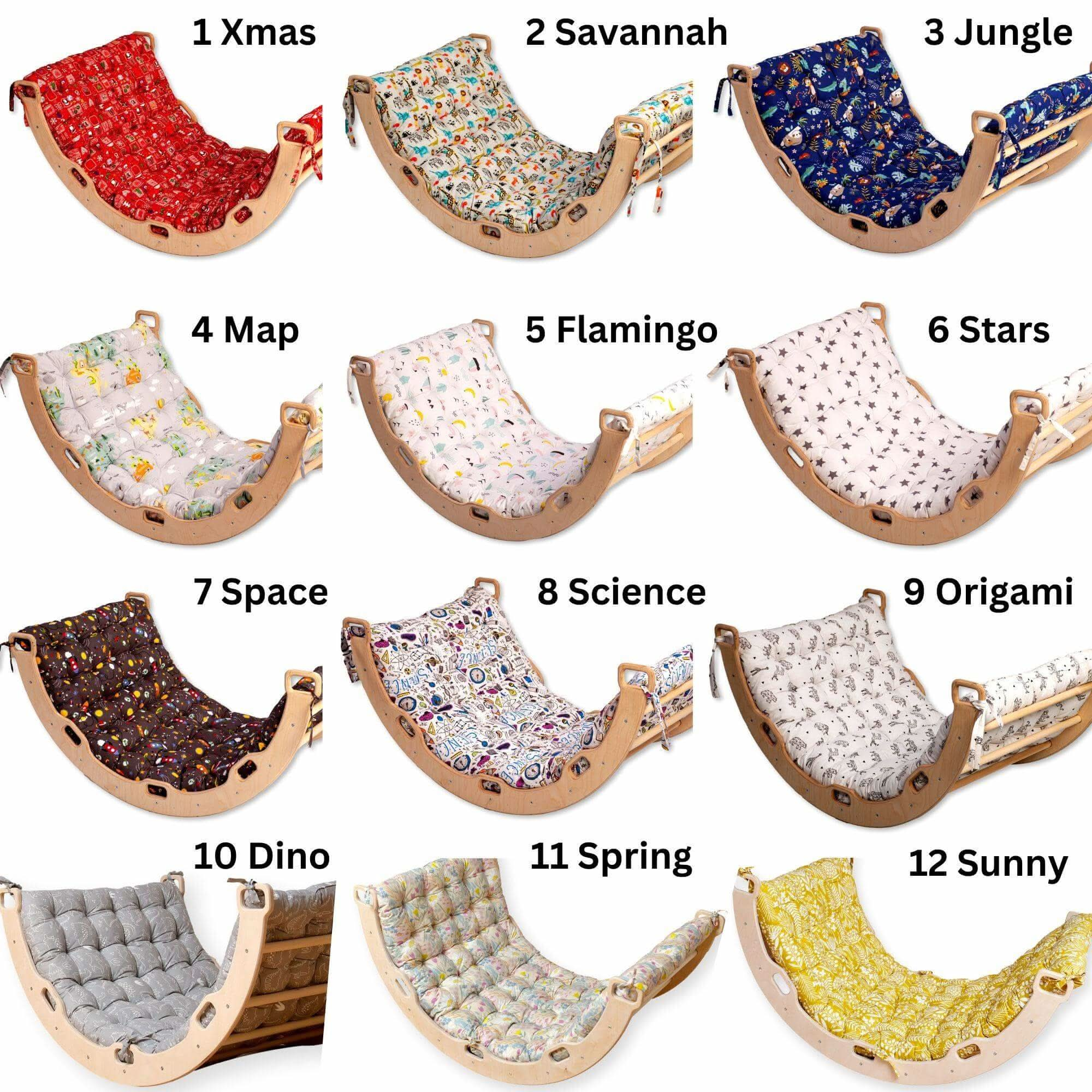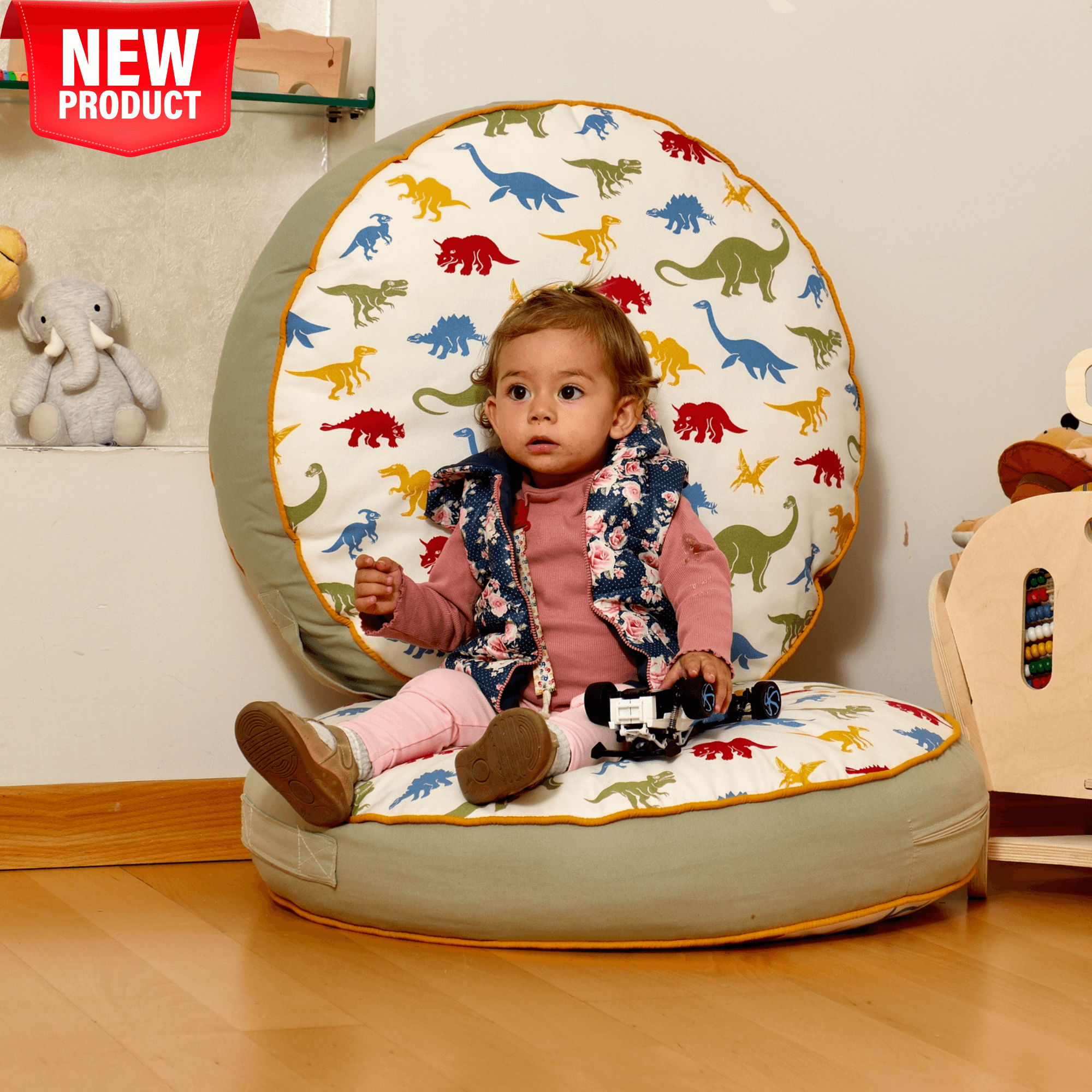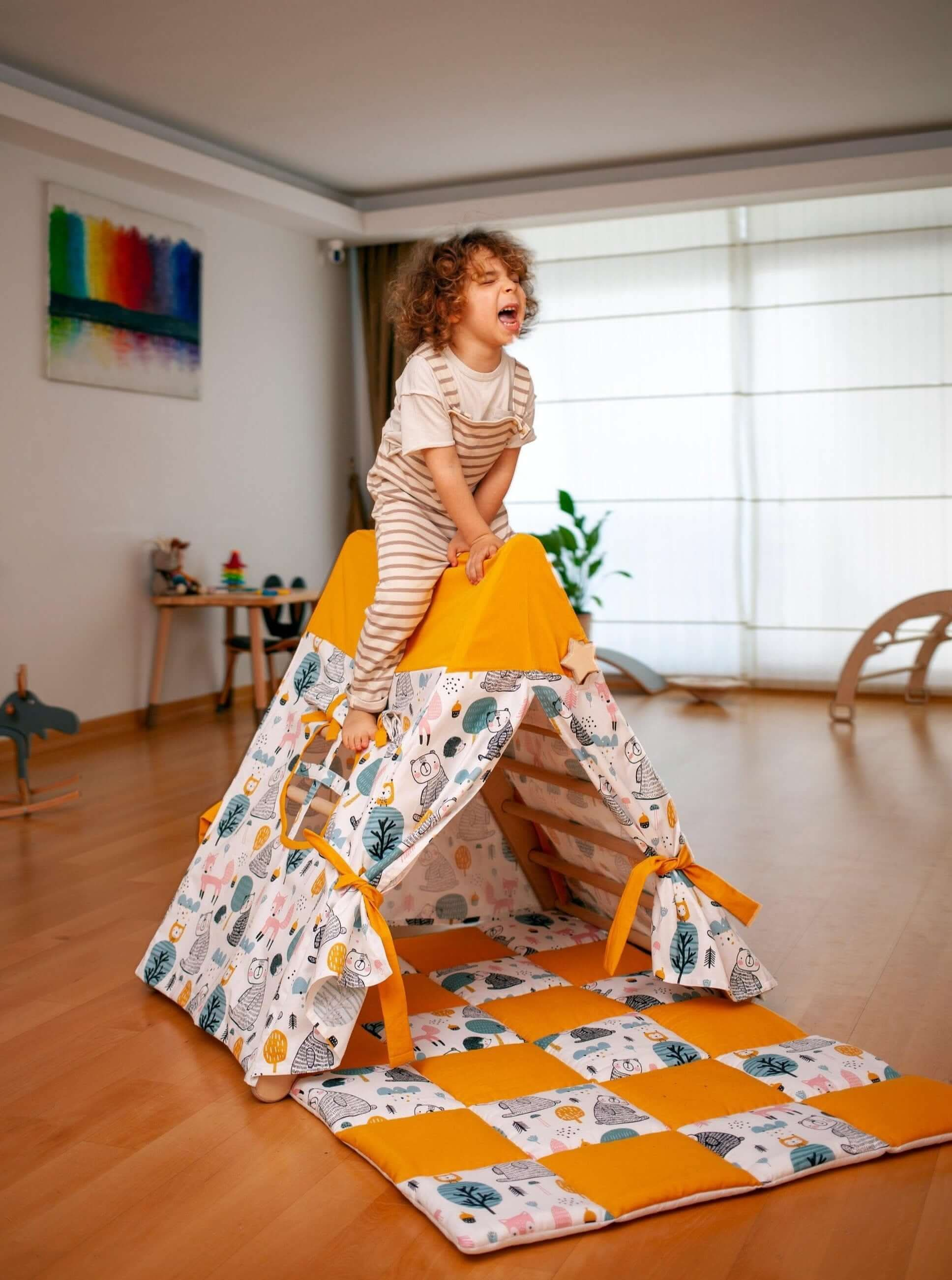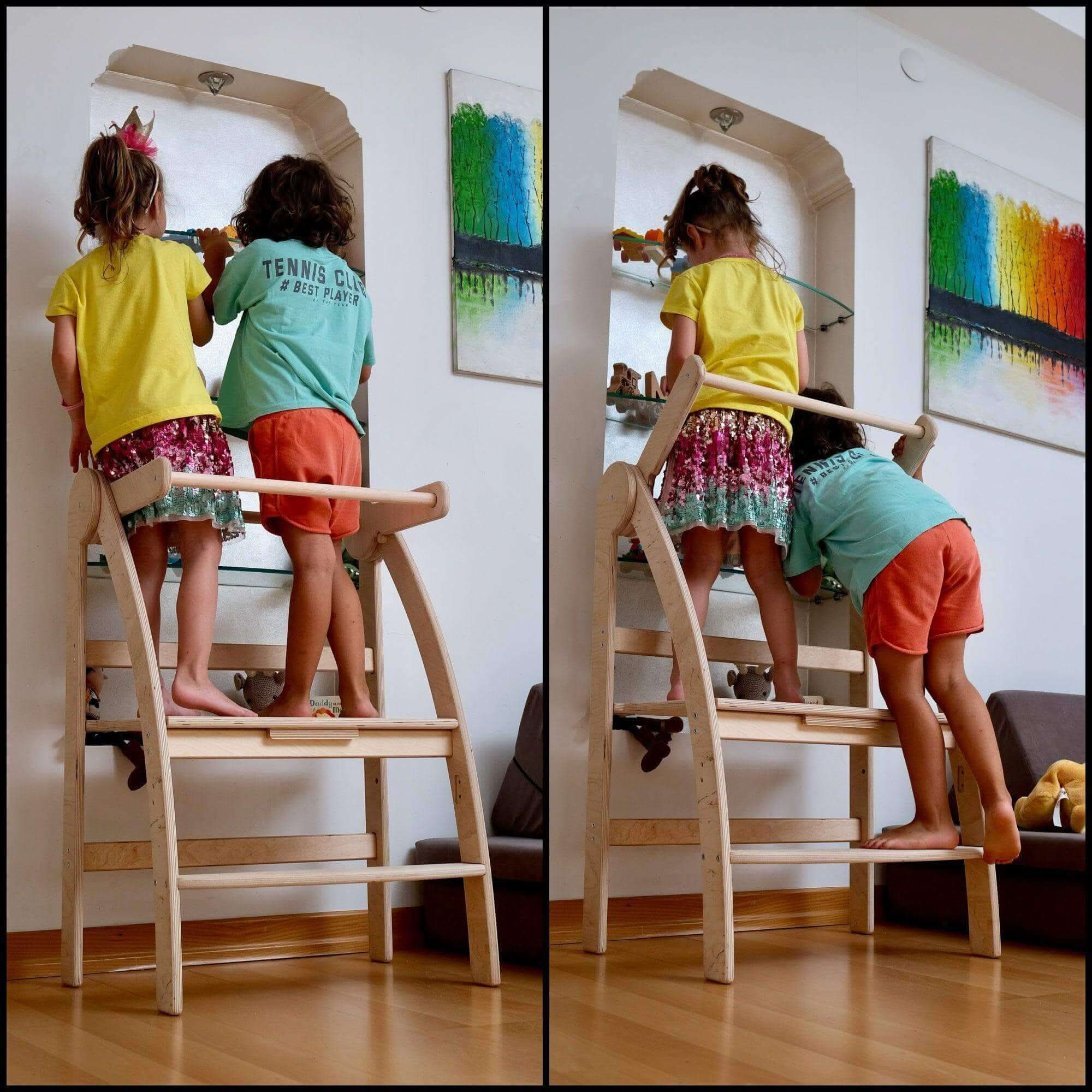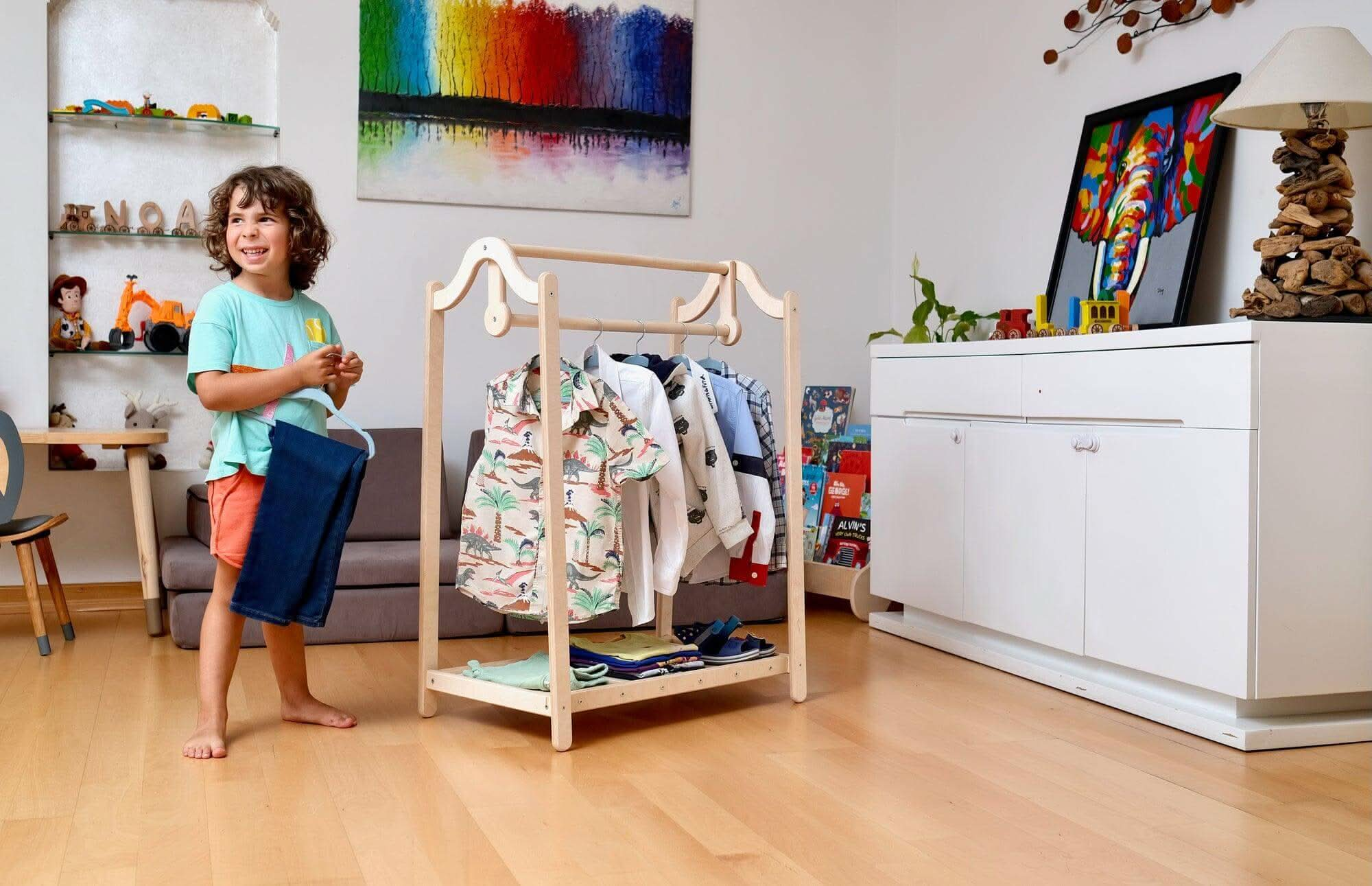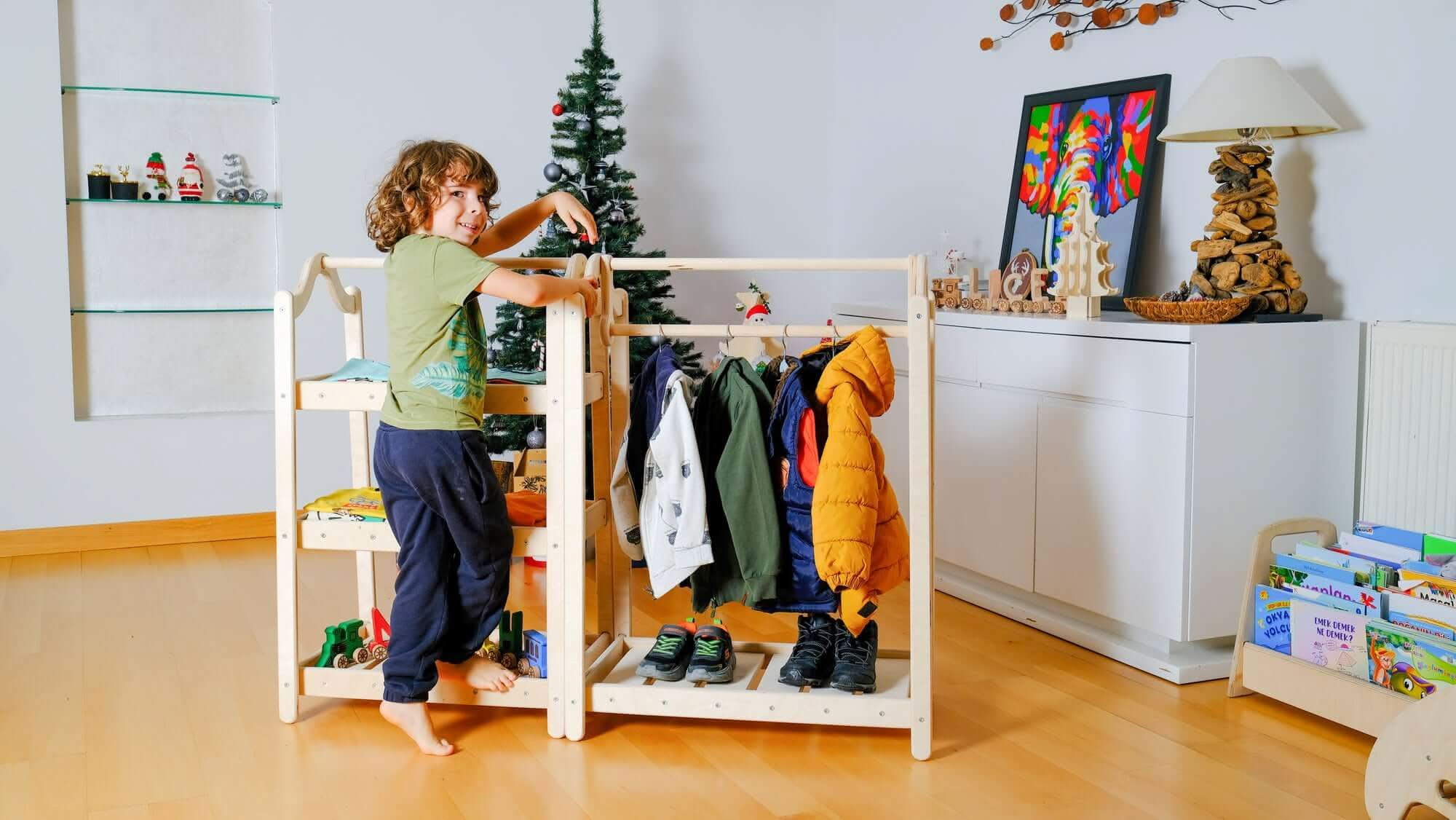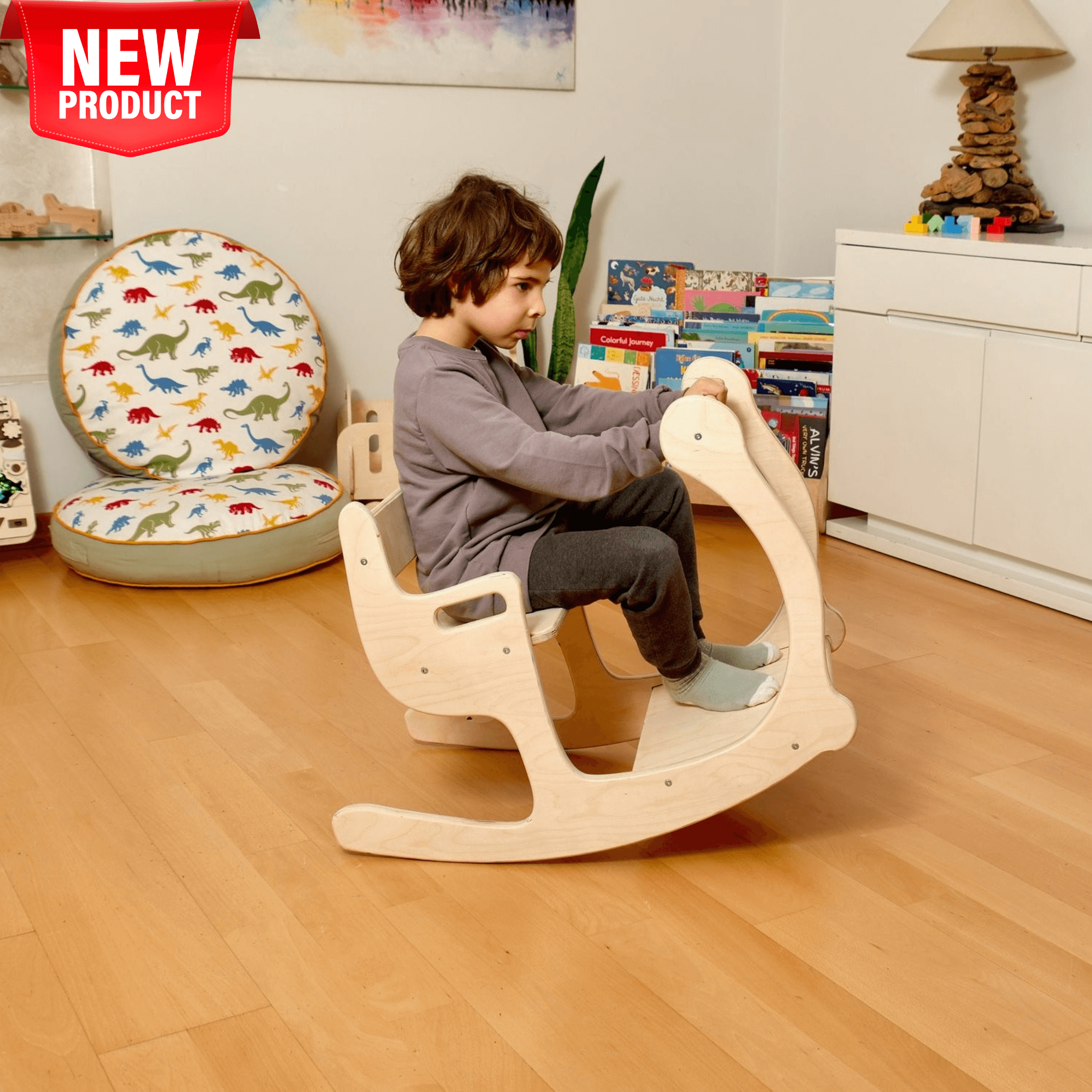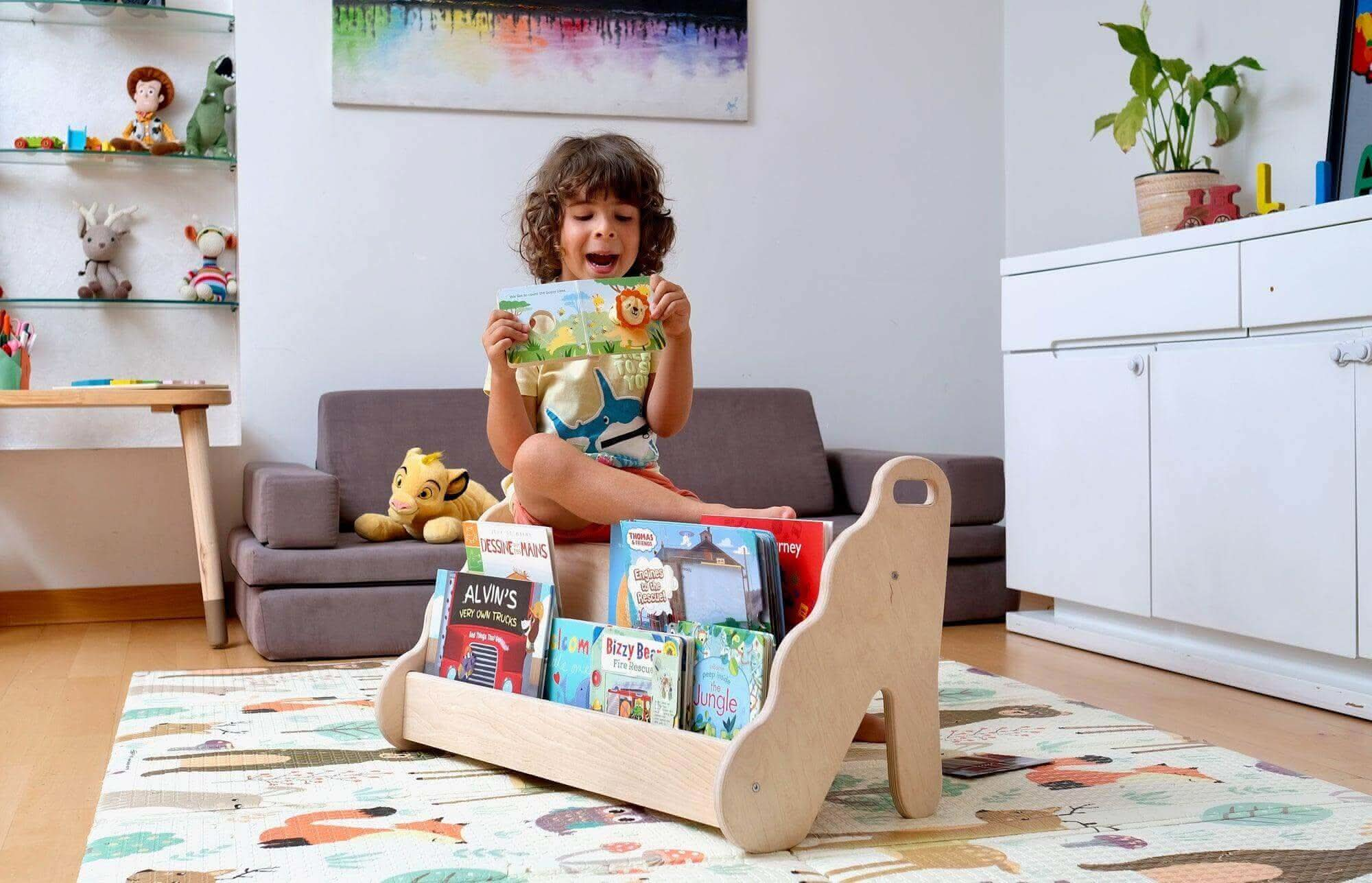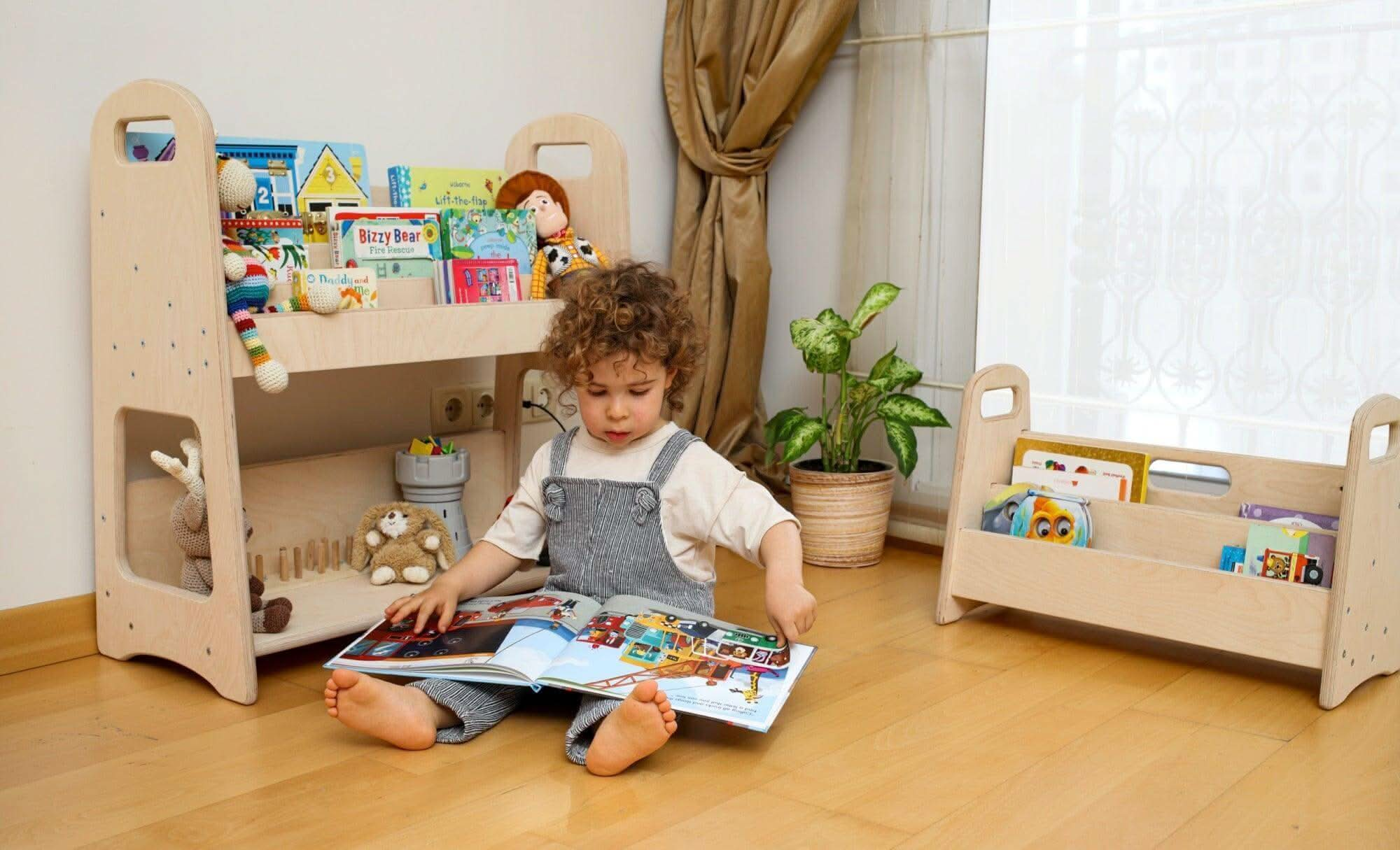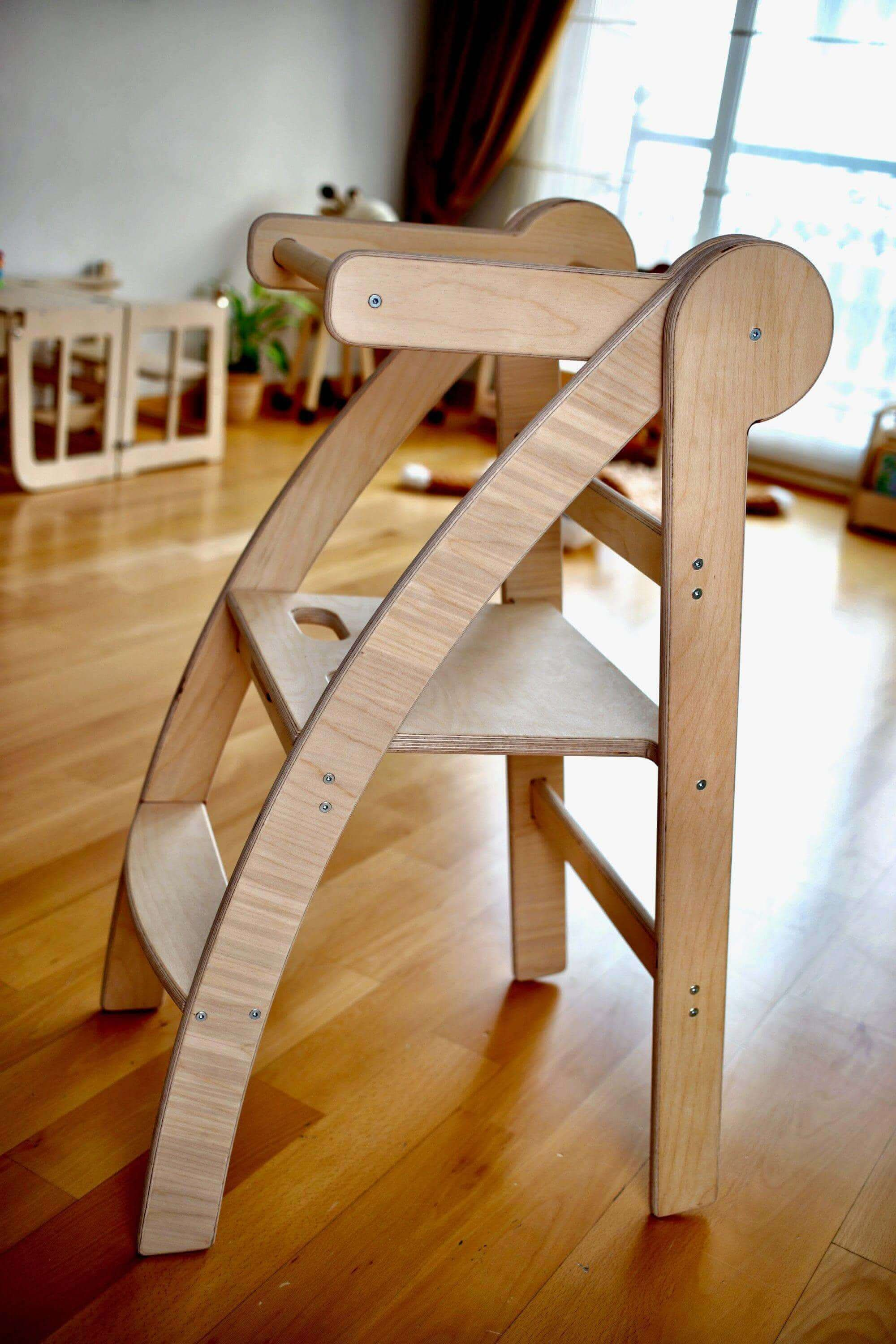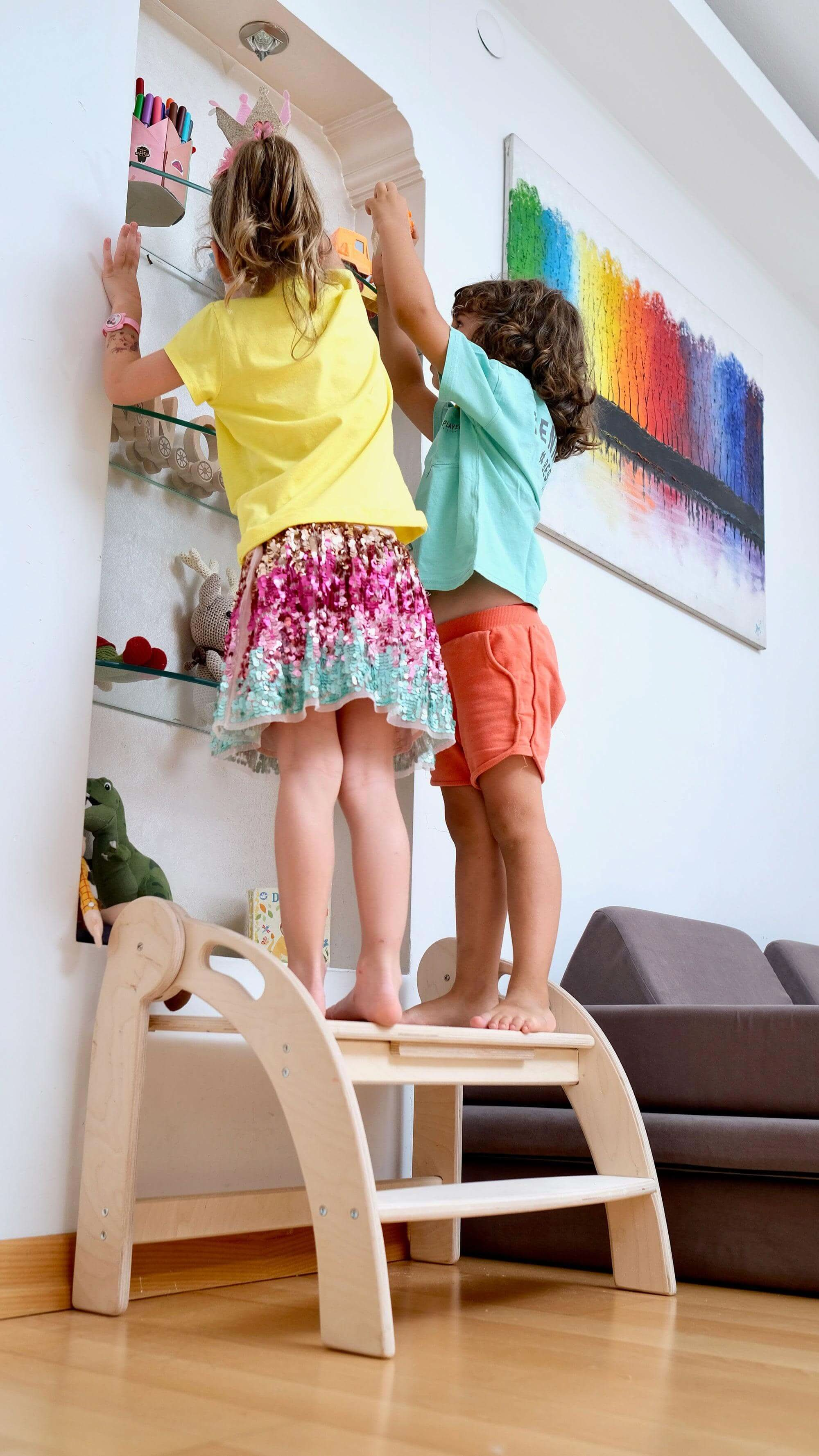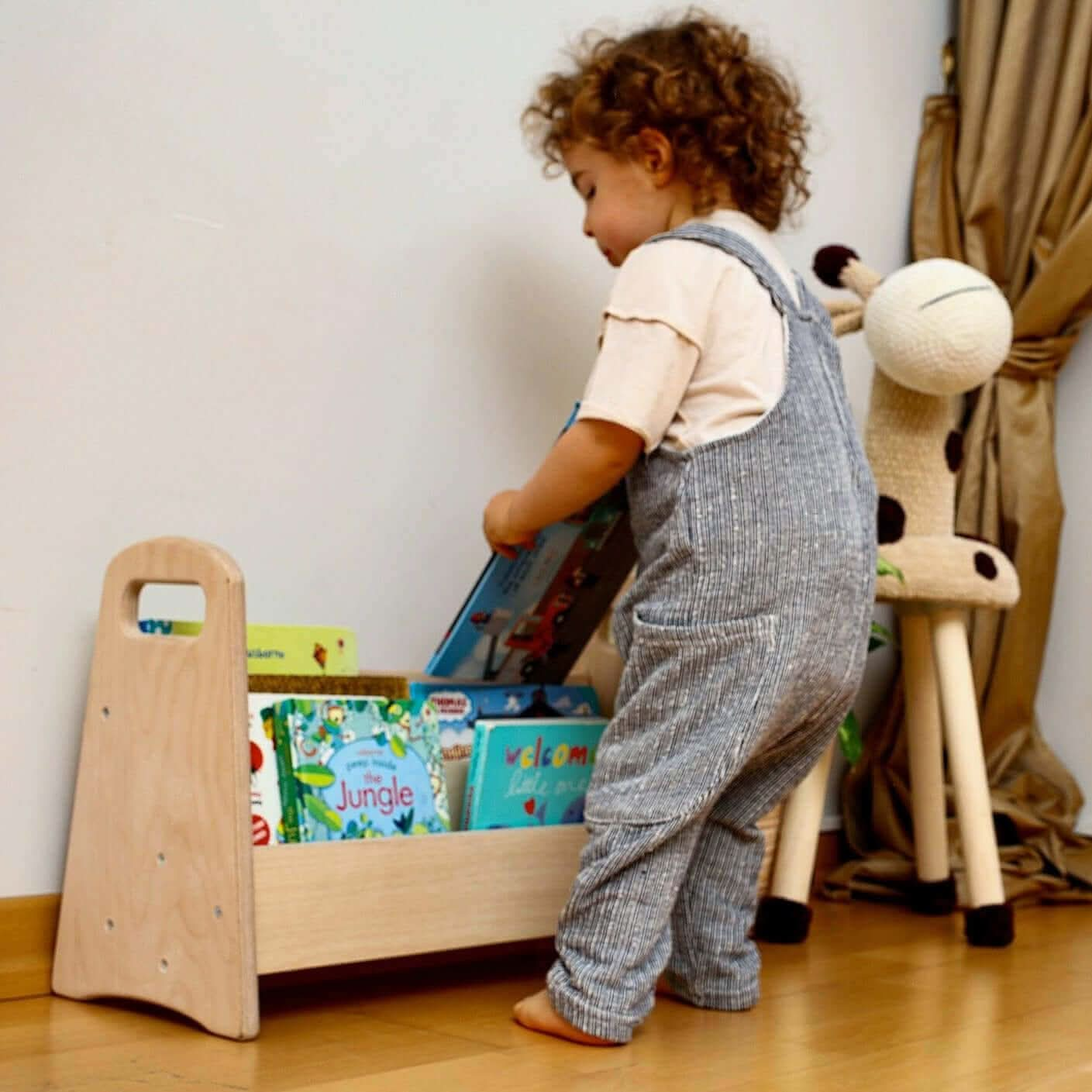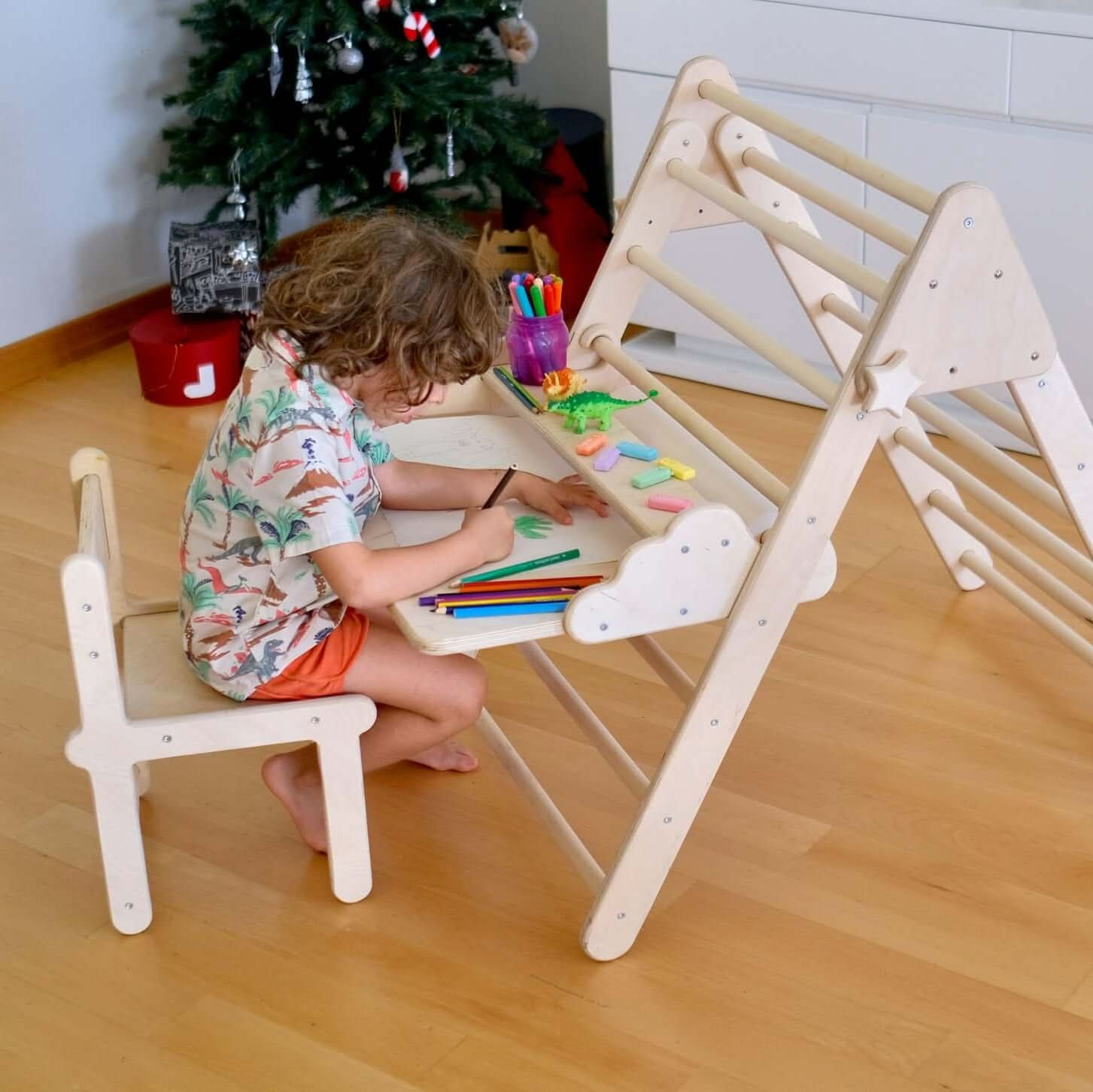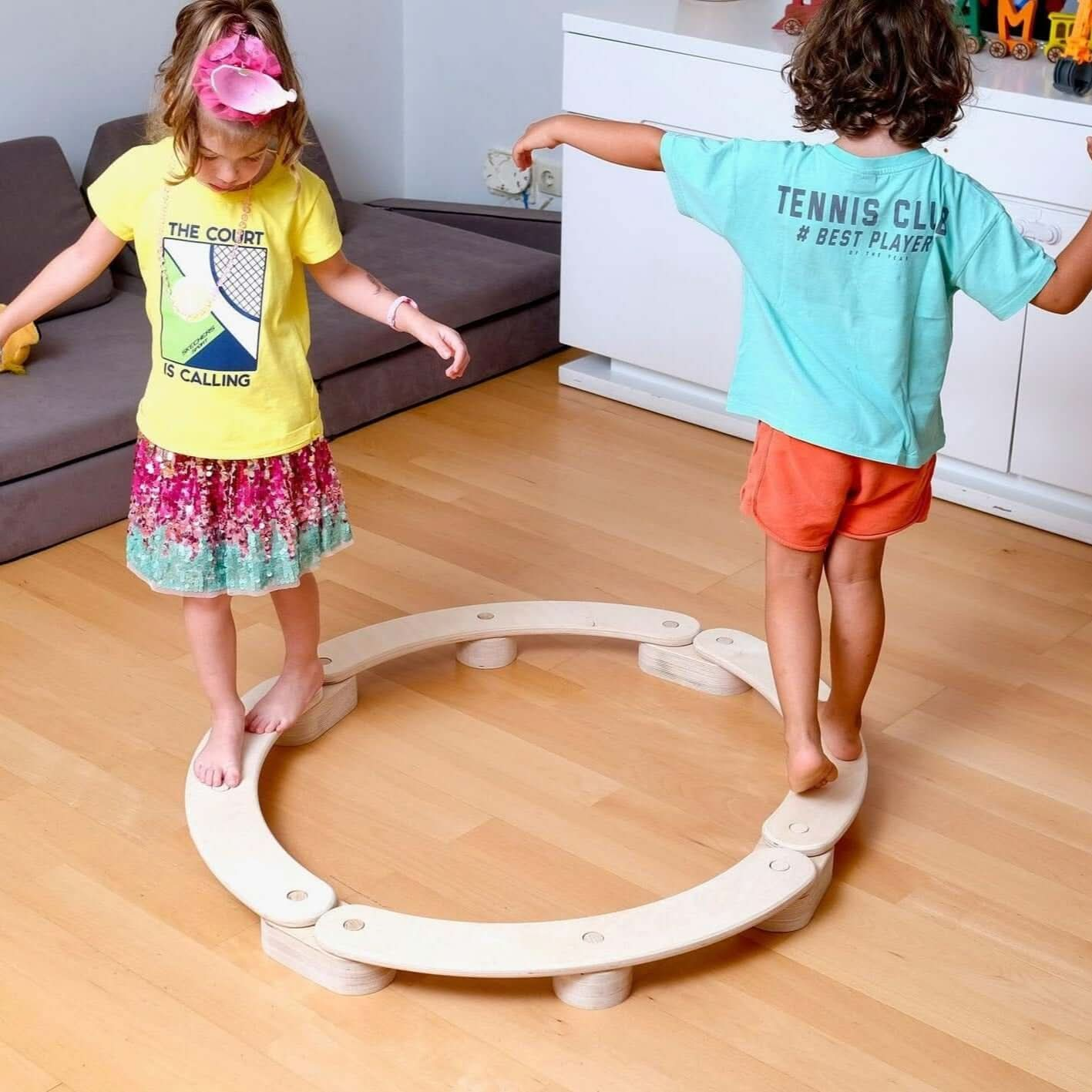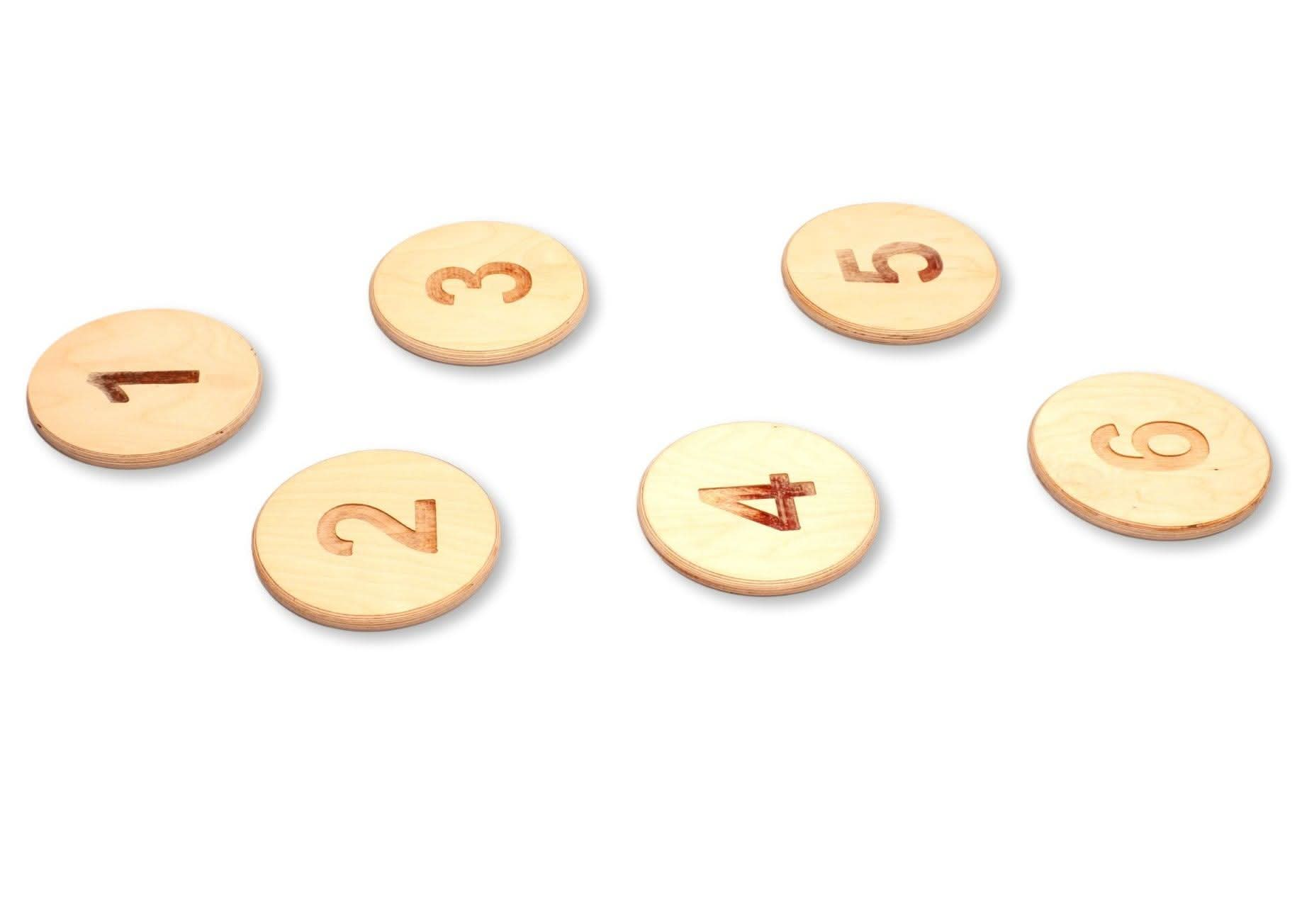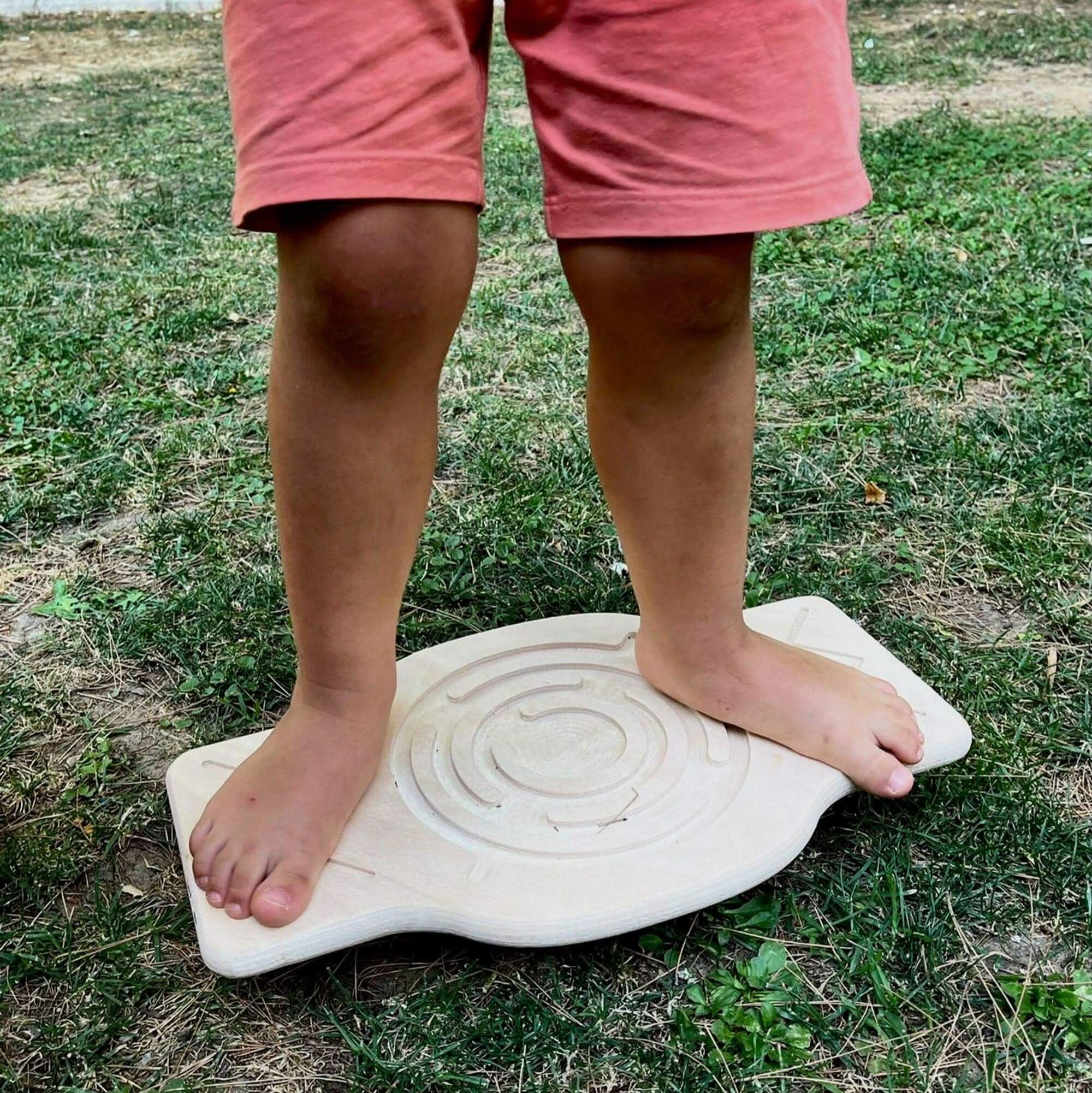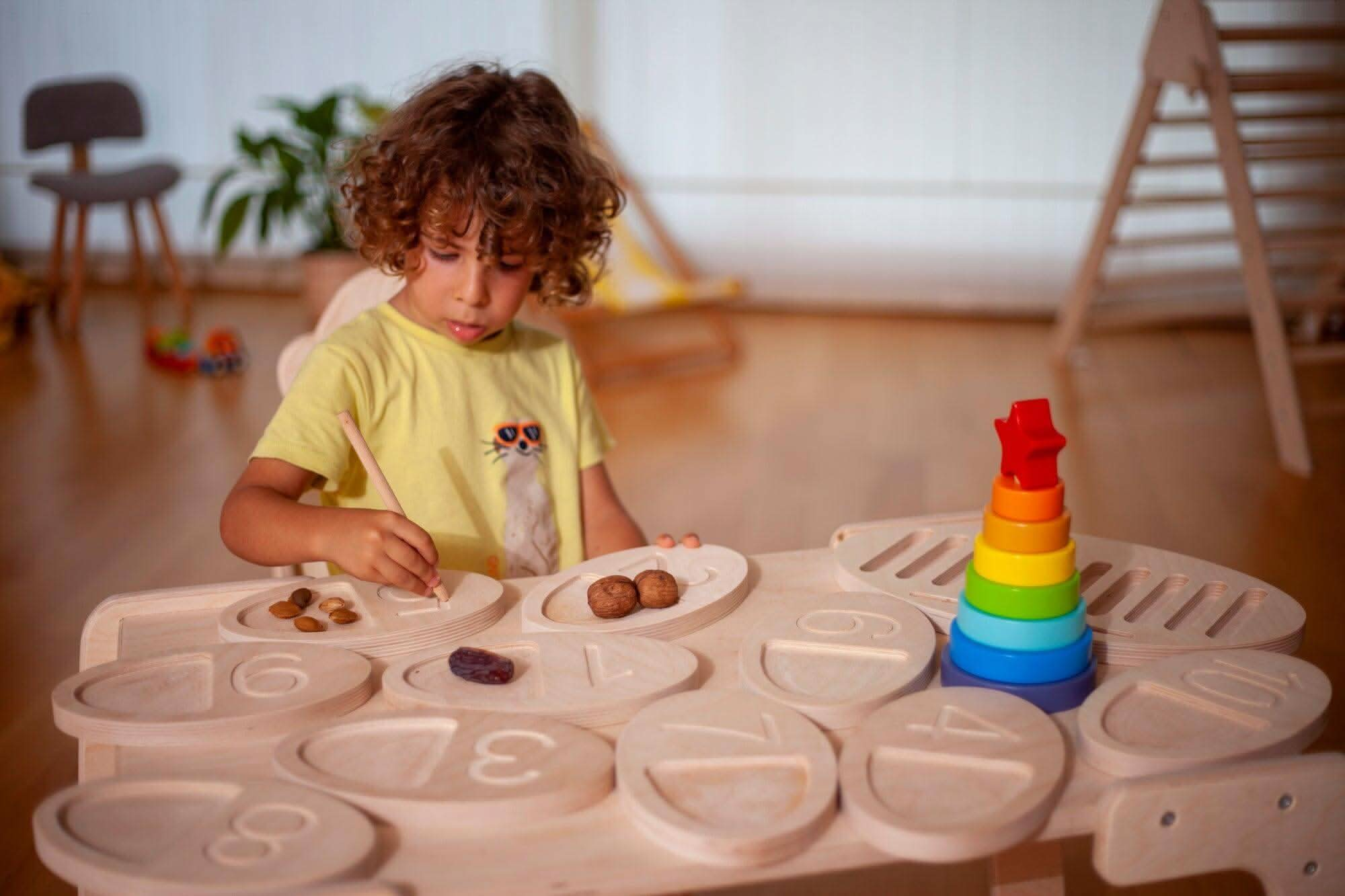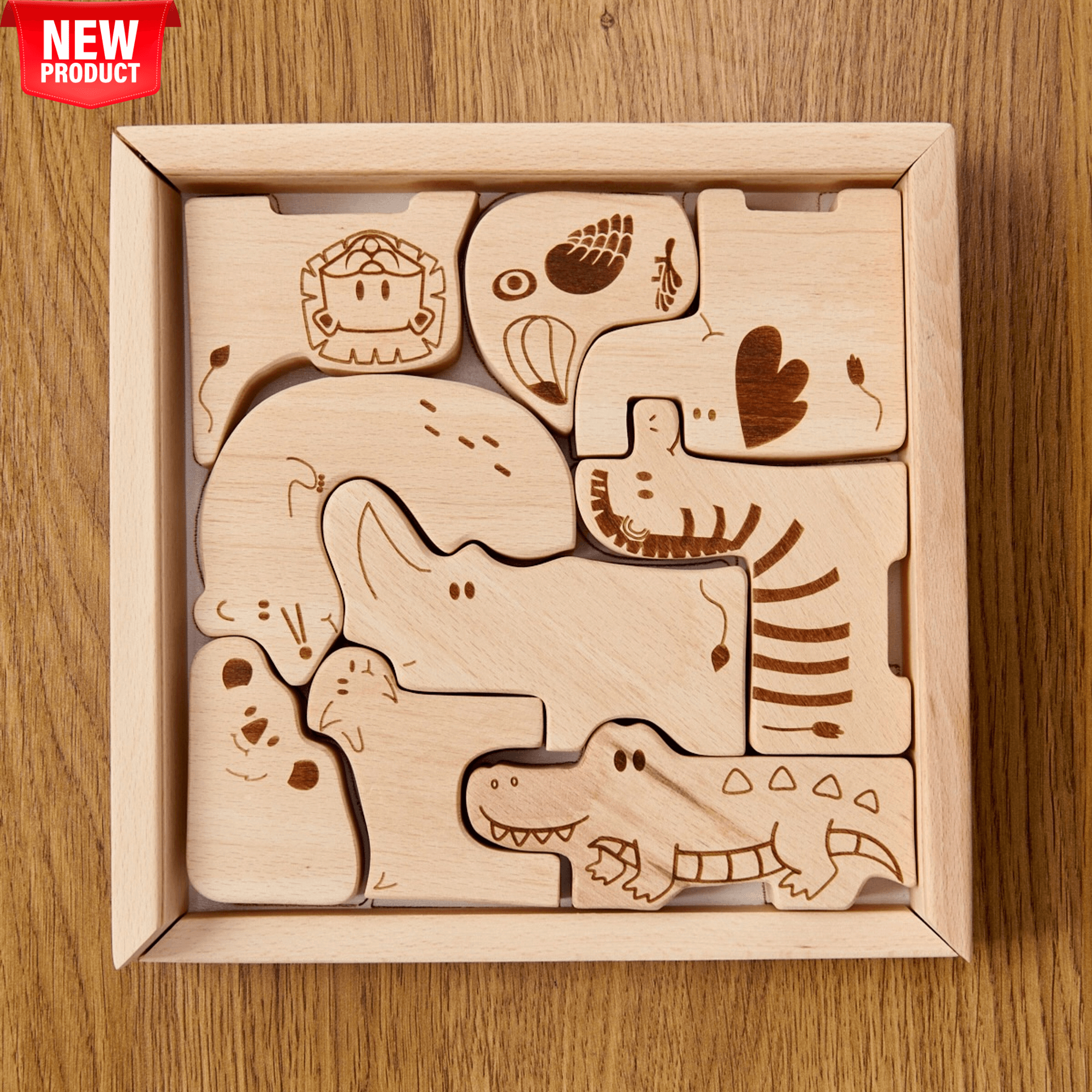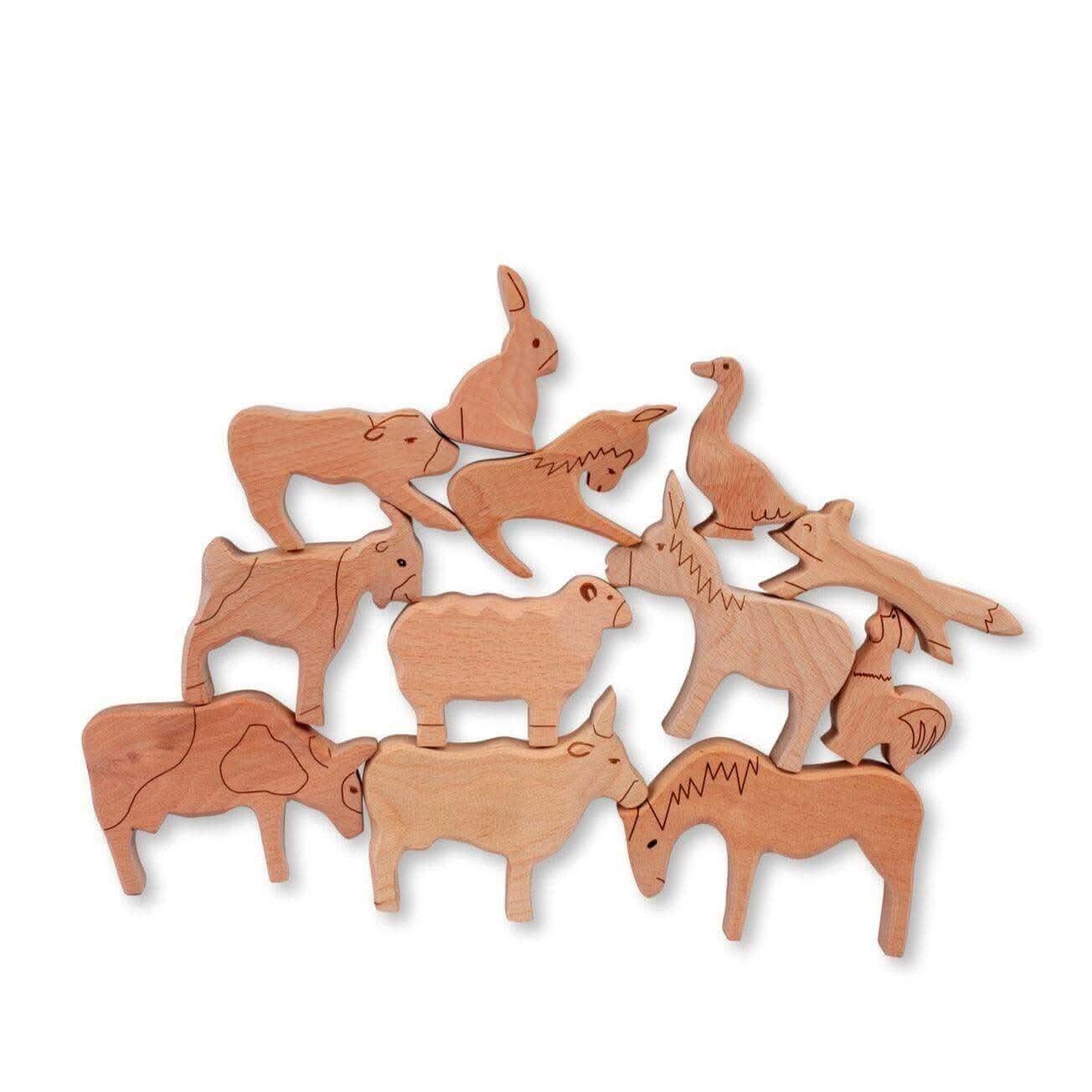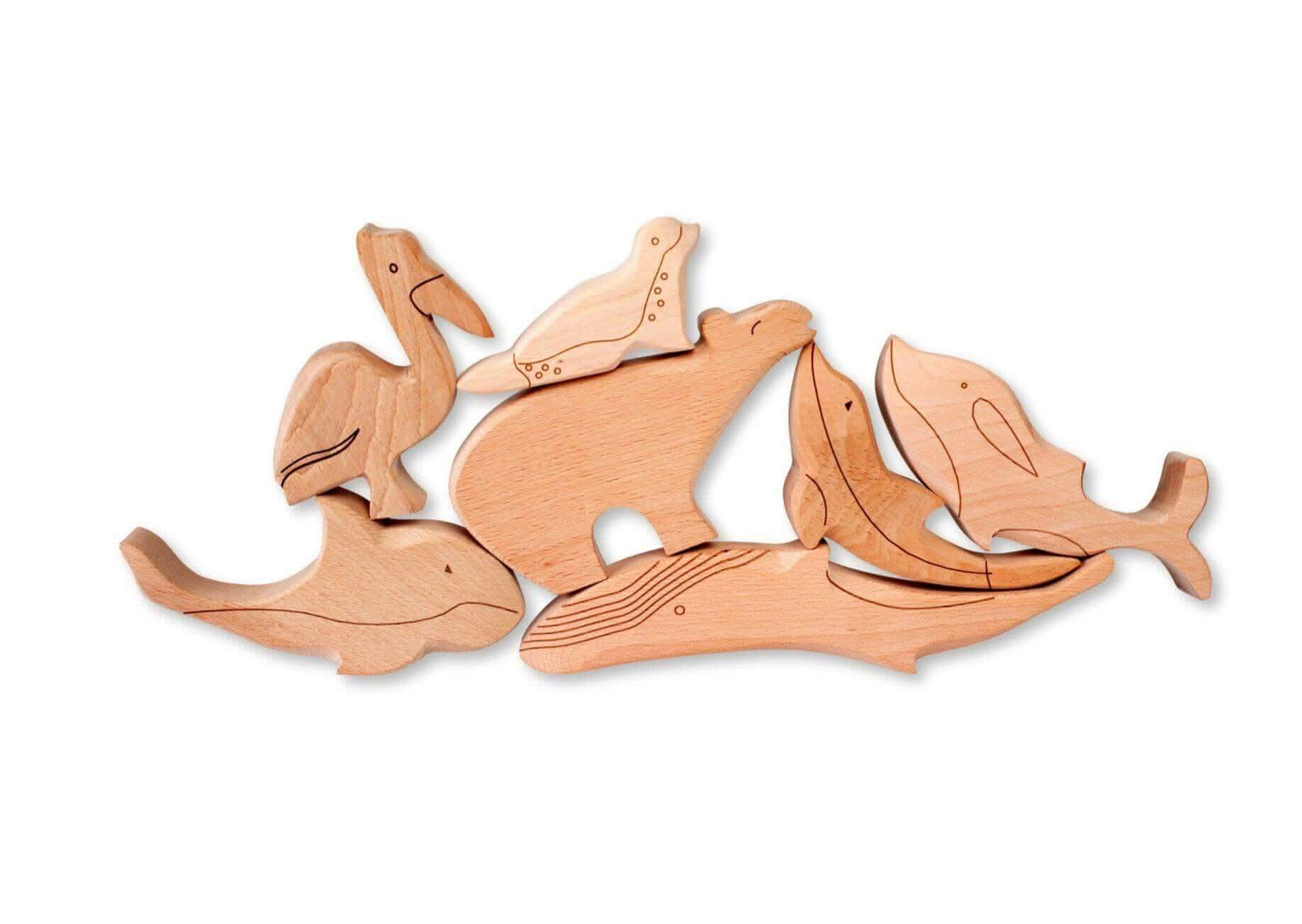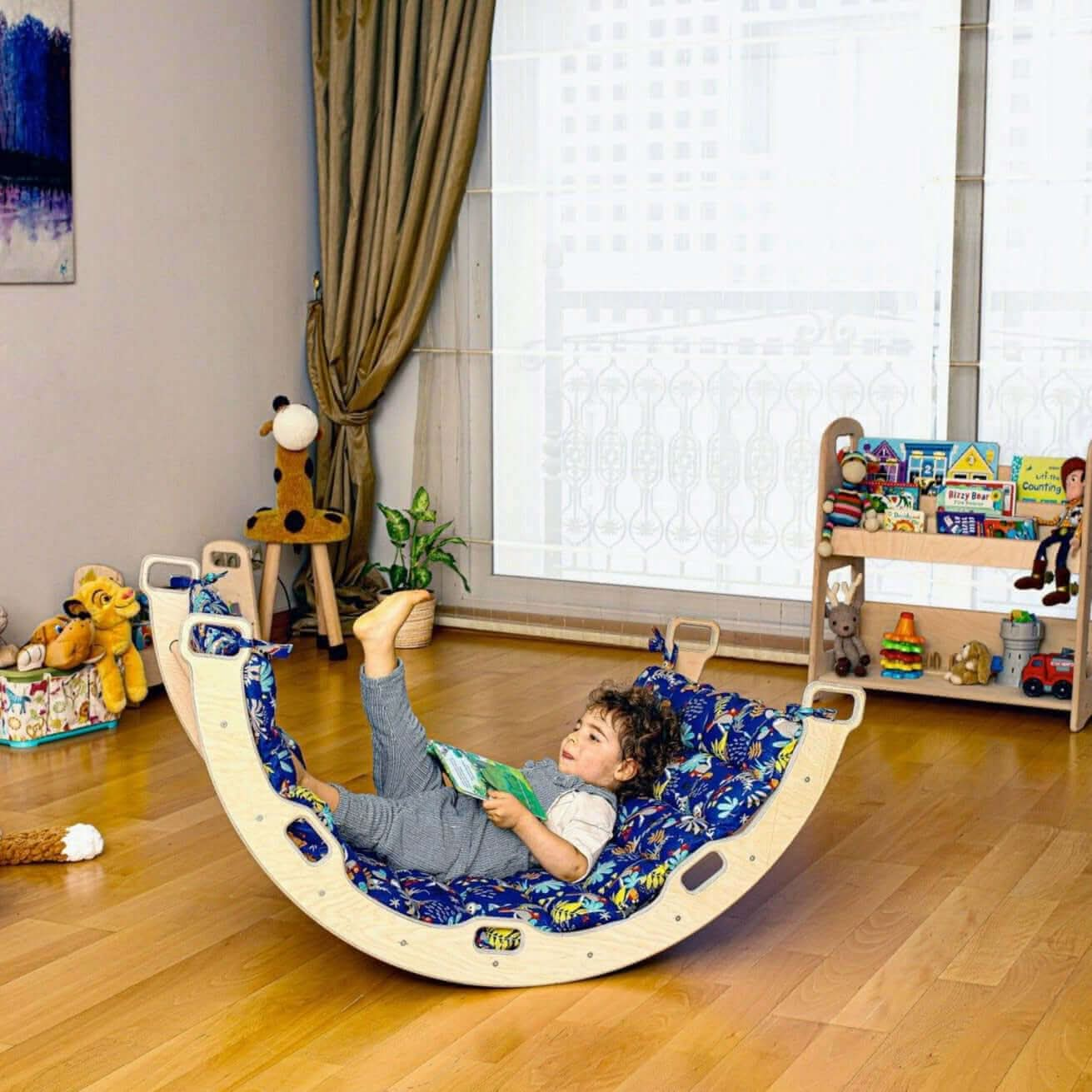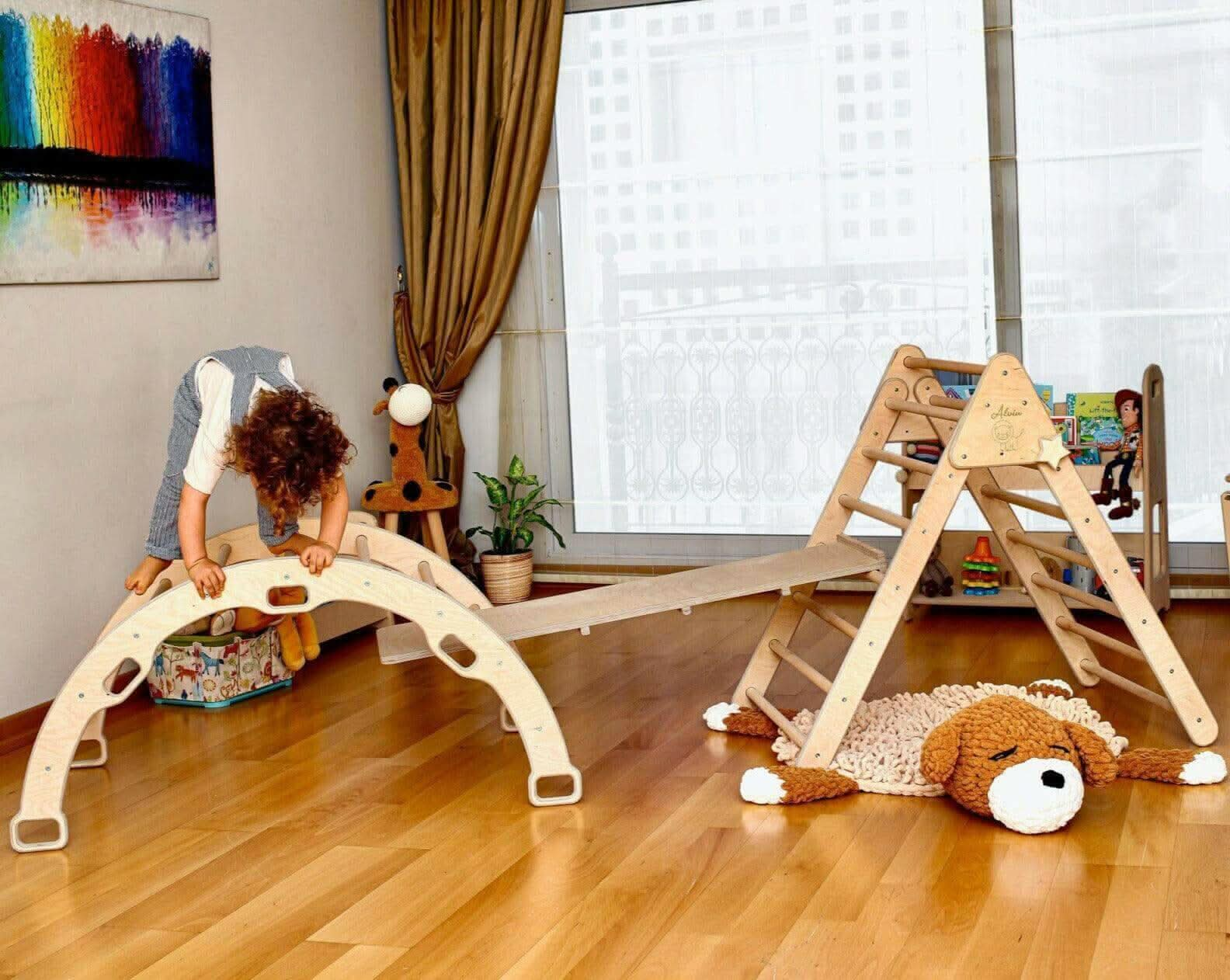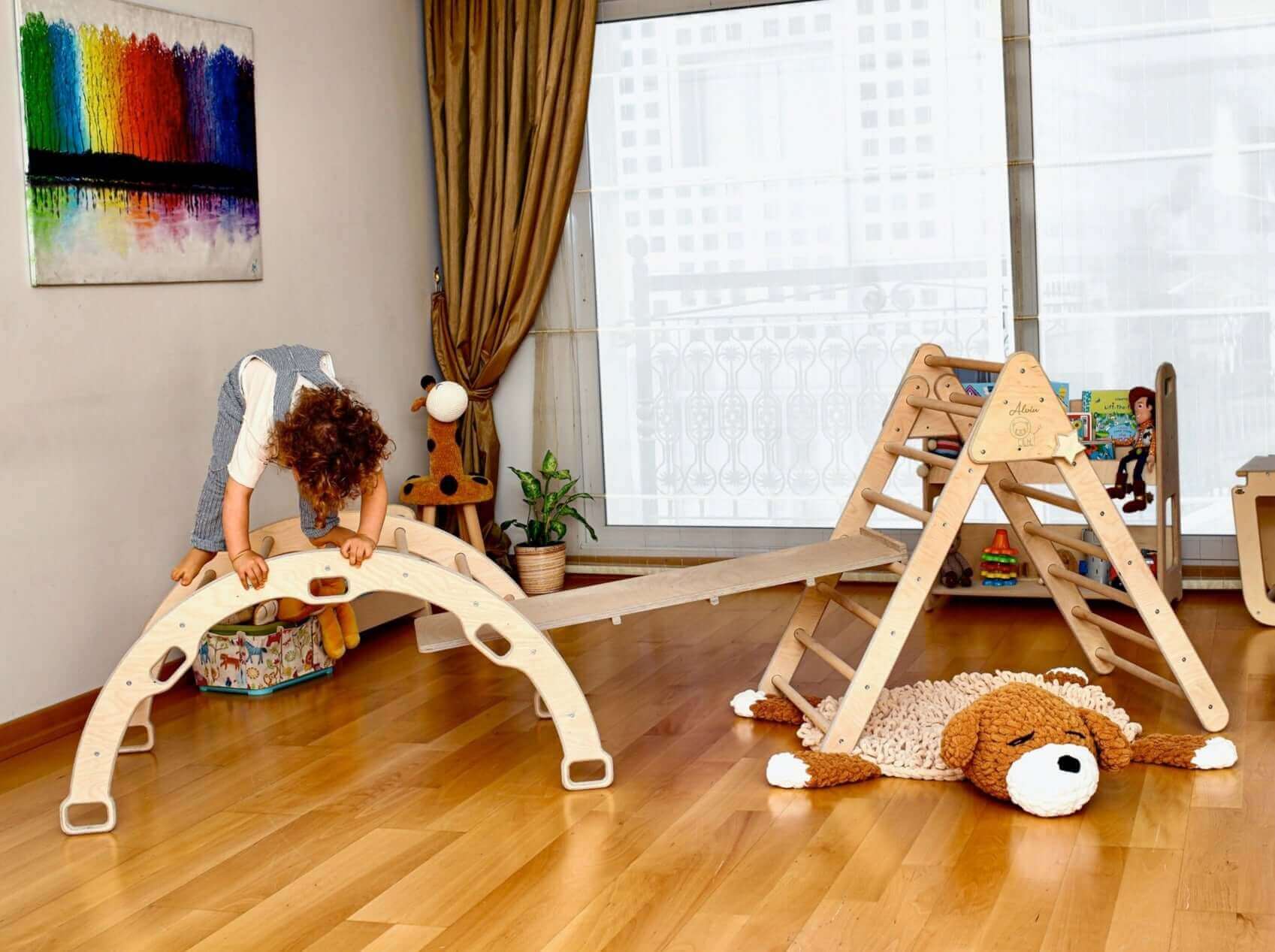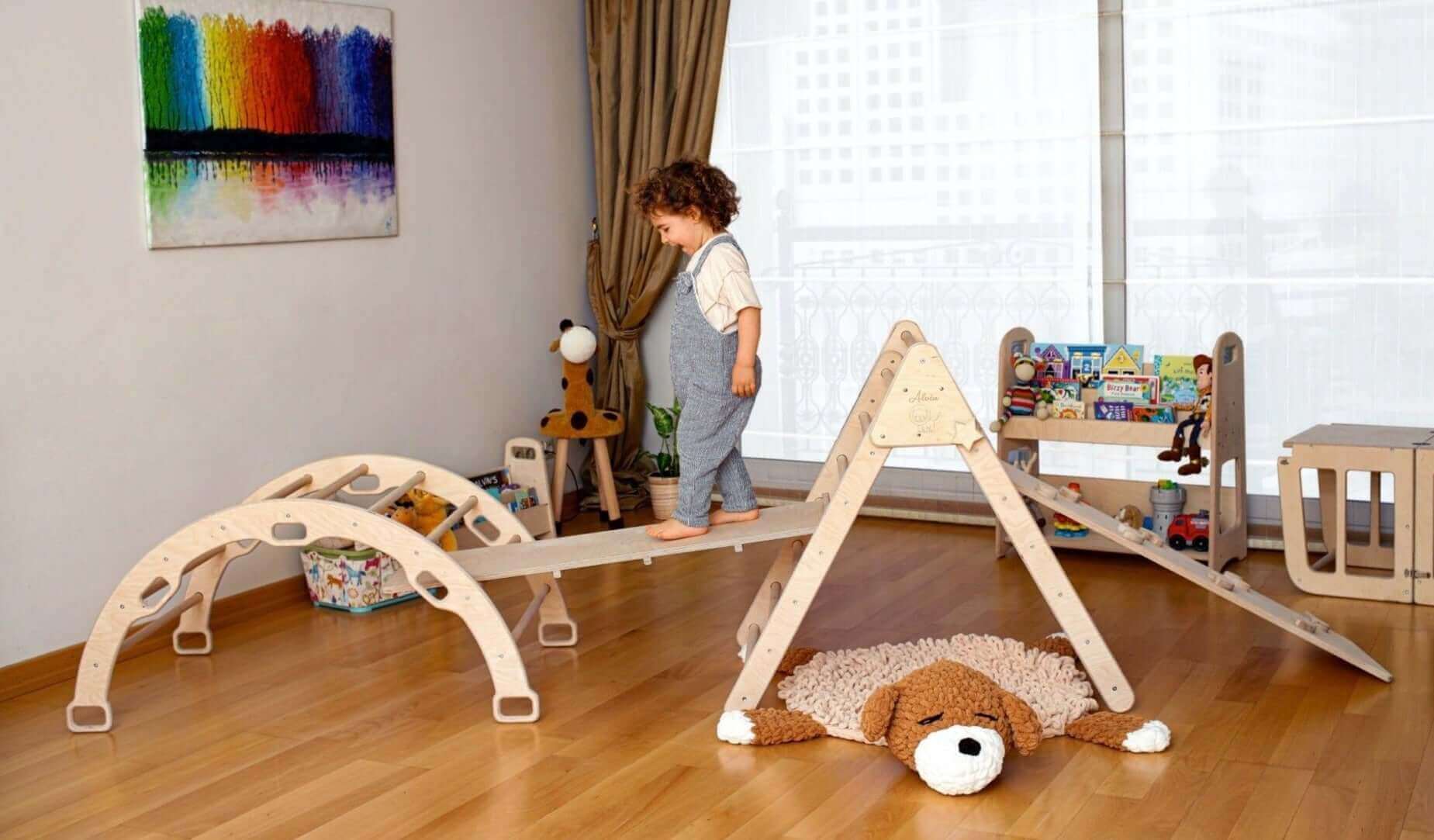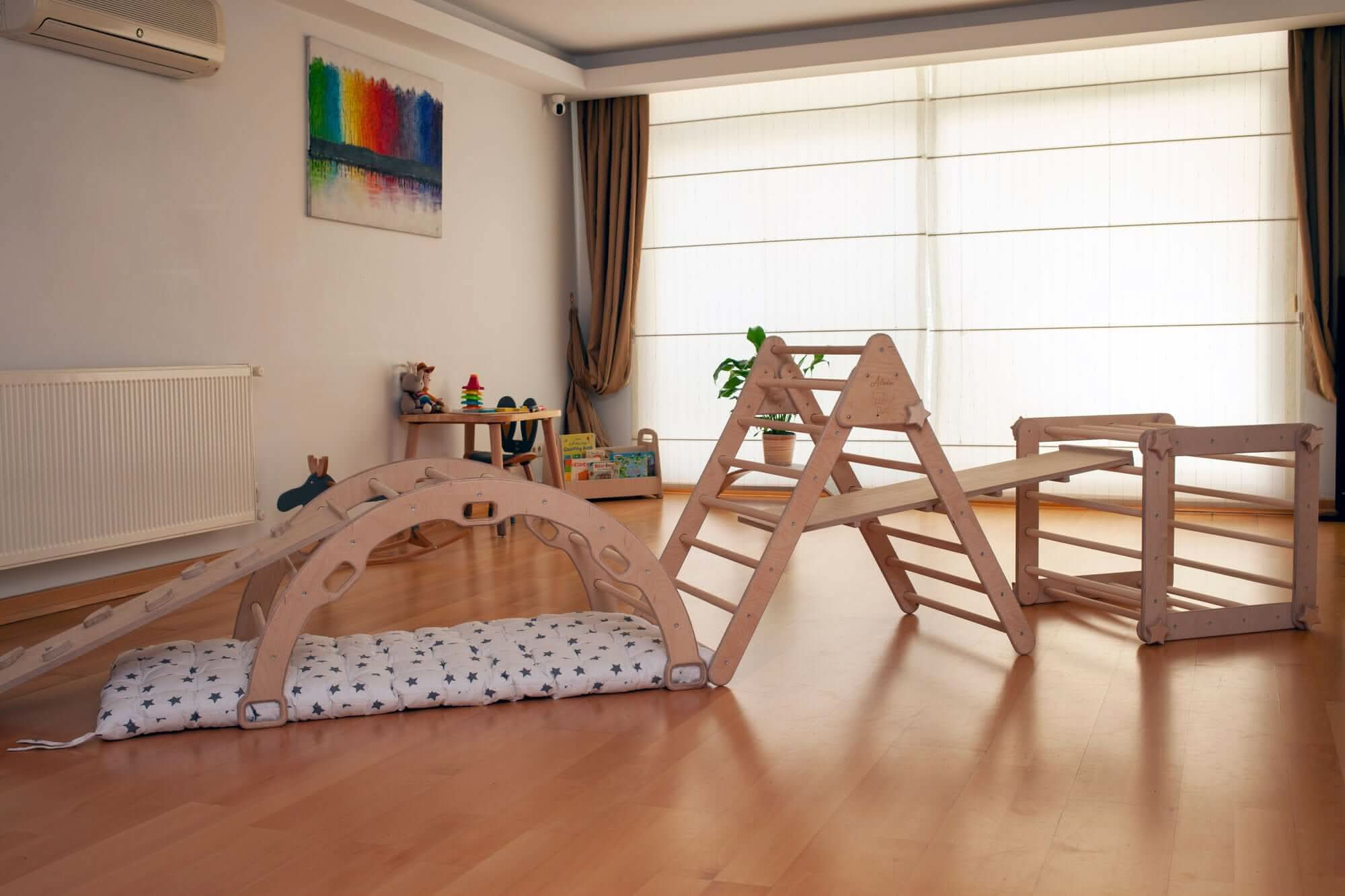Embracing the Montessori Approach to Reading
A child's reading journey begins long before they pronounce their first word. The environment we craft around their books plays a pivotal role in nurturing a lifelong romance with reading. Enter the Montessori bookshelf – not just a storage solution, but a gateway to literary adventures that respect your little one's natural development.
Unlike conventional bookshelves that hide book covers behind spines, Montessori bookshelves display books face-forward, inviting curious minds to explore without adult intervention. This seemingly simple adjustment creates a profound shift in how children interact with literature.
When books showcase their captivating covers rather than their slim spines, children can independently select stories that spark their interest. This autonomy is the cornerstone of Montessori philosophy – trusting children to follow their innate curiosity and make choices that fuel their developmental journey.
The Science Behind Forward-Facing Books
Research consistently demonstrates that young children process visual information more effectively than text. A forward-facing bookshelf leverages this natural cognitive tendency, transforming books from mysterious objects into recognizable friends with familiar faces.
The psychological impact runs deeper than mere convenience. When children can visually scan available titles, they experience less frustration during book selection. This positive association cultivates an environment where reading becomes a joy rather than a chore – setting the stage for enthusiastic literacy development in the years ahead.
"The greatest sign of success for a teacher is to be able to say, 'The children are now working as if I did not exist.'" - Maria Montessori
These specially designed bookshelves embody this Montessori principle perfectly, creating a space where children navigate their literary world with confidence and independence.
Benefits of a Montessori-Style Reading Space
Transforming your child's reading area with a Montessori bookshelf delivers advantages that stretch far beyond aesthetic appeal. This thoughtful adaptation fosters independence, enhances decision-making skills, and nurtures a genuine love for reading – benefits that ripple throughout your child's developmental journey.
The accessible nature of forward-facing books empowers even the youngest readers to make meaningful choices without adult assistance. This newfound autonomy strengthens their confidence and self-reliance – qualities that transfer to countless other areas of development.
Fostering Independence and Decision-Making
When children can clearly see their literary options, they develop valuable decision-making muscles. Instead of requesting adult help or grabbing randomly, they thoughtfully evaluate options based on covers that speak to their current interests and developmental stage.
This seemingly small victory – selecting their own reading material – reinforces their growing sense of agency. The Montessori bookshelf becomes a microcosm where children practice making choices, experiencing consequences (enjoying or losing interest in their book selection), and refining future decisions.
The independence cultivated through this mindful arrangement extends beyond reading time. Children who regularly exercise choice-making develop stronger executive function skills, better emotional regulation, and enhanced problem-solving abilities that serve them throughout their educational journey.
Creating Order and Reducing Overwhelm
Traditional bookshelves often become chaotic repositories where books disappear into forgotten corners. The Montessori alternative introduces delightful order that resonates with a child's innate desire for clarity and organization.
With limited display space, these specialized shelves naturally curb book overwhelm. Rather than facing dozens of options, children encounter a carefully curated collection – typically 5-10 titles – that prevents decision fatigue and encourages deeper engagement with each story.
This intentional limitation aligns perfectly with research on choice architecture, which suggests that fewer, more meaningful options often lead to greater satisfaction and engagement than overwhelming abundance.
Designing Your Montessori Reading Corner
Creating an enchanting Montessori reading nook requires thoughtful consideration beyond the bookshelf itself. The most inviting spaces combine several elements that work in harmony to honor your child's developmental needs while igniting their literary imagination.
Begin by selecting a tranquil location away from high-traffic areas and electronic distractions. This dedicated space signals to your child that reading deserves its own special territory – a quiet haven for literary exploration and reflection.
Selecting the Perfect Bookshelf
When choosing a Montessori bookshelf, prioritize these essential qualities:
- Child-appropriate height (allowing independent access without adult assistance)
- Sturdy construction that withstands enthusiastic interaction
- Non-toxic, eco-friendly materials that align with sustainability values
- Forward-facing display that showcases book covers rather than spines
- Simple, uncluttered design that minimizes visual distraction
The ideal shelf balances accessibility with safety. Look for designs with rounded edges, solid construction, and appropriate anchoring options to prevent tipping hazards. Remember that natural materials like sustainably harvested wood not only provide durability but also connect children to the organic world in our increasingly synthetic environment.
Complementary Elements for the Perfect Reading Space
A transcendent reading corner extends beyond the bookshelf to encompass these complementary elements:
Comfortable seating invites extended reading sessions. Consider child-sized armchairs, floor cushions, or cozy bean bags that support proper posture while enveloping young readers in comfort. Natural fabrics like cotton and wool provide sensory-friendly surfaces that enhance the reading experience.
Thoughtful lighting transforms the atmosphere of your reading nook. Position the bookshelf where natural light illuminates book covers during daytime hours. Supplement with warm, adjustable lighting for overcast days and evening reading sessions. Avoid harsh fluorescent options that create visual fatigue and diminish the cozy ambiance.
Acoustical considerations often go overlooked but significantly impact reading enjoyment. Position your reading corner away from household hubs of activity, or incorporate sound-absorbing elements like area rugs, fabric wall hangings, or strategically placed furniture to create a tranquil auditory environment conducive to concentration and imagination.
Curating Your Child's Book Collection
The Montessori approach to literature selection transcends simplistic age recommendations to honor each child's unique developmental journey. Thoughtful curation creates a dynamic library that evolves alongside your child's expanding interests and cognitive capabilities.
Begin by observing your child's current fascinations without judgment or academic expectations. Their attraction to certain themes, illustrations, or formats provides invaluable insight into their developmental needs and intellectual curiosities.
Age-Appropriate Selection Principles
While each child follows their distinctive developmental trajectory, these guidelines offer helpful frameworks for book selection:
| Age Range | Book Characteristics | Content Considerations |
|---|---|---|
| 0-12 months | High-contrast images, tactile elements, durable construction | Simple patterns, faces, familiar objects from baby's environment |
| 1-2 years | Board books, limited text, interactive elements | Practical life activities, simple sequences, familiar routines |
| 2-3 years | Sturdier pages, increased text, predictable patterns | Expanded vocabulary, nature exploration, emotional themes |
| 3-6 years | Varied formats, more complex narratives, realistic illustrations | Diverse cultures, scientific concepts, nuanced emotions |
Remember that these categories serve as starting points rather than rigid boundaries. A developmentally advanced two-year-old might deeply engage with books typically recommended for older children, while a five-year-old might still find comfort and value in simpler texts alongside more sophisticated selections.
Rotation Strategies for Sustained Interest
The limited display space of Montessori bookshelves necessitates thoughtful rotation – a practice that maintains freshness while preventing overwhelm. Implement these strategies to maximize engagement while respecting your child's developmental needs:
Observe reading patterns to identify both favorites and overlooked titles. Perennial favorites deserve permanent display positions, while untouched books signal misalignment with current interests or developmental readiness. This careful observation informs meaningful rotations that respect your child's authentic preferences.
Consider implementing thematic rotations that complement seasonal changes, current family experiences, or emerging interests. When planning a nature walk, display books about local flora and fauna. Before visiting grandparents, showcase stories about family relationships. These contextual connections deepen engagement by bridging literature with lived experience.
The ideal rotation schedule balances novelty with consistency. Many Montessori educators recommend refreshing approximately one-third of displayed books weekly, maintaining familiar favorites while introducing new possibilities. This measured approach provides enough novelty to spark interest without creating disorienting wholesale changes.
DIY Montessori Bookshelf Projects
Creating your own Montessori bookshelf transforms a simple furniture piece into a labor of love infused with intention and personalization. These projects range from weekend warrior efforts to ambitious woodworking adventures, allowing families to match their creations to their skill level, available time, and aesthetic preferences.
Before embarking on your DIY journey, consider your space constraints, design preferences, and the number of books you wish to display. Taking measurements and sketching potential designs helps visualize the final product while identifying potential challenges before they arise.
Simple Solutions for Beginners
Even those with minimal crafting experience can create functional Montessori bookshelves through these approachable methods:
The rain gutter bookshelf represents perhaps the most straightforward DIY option. Simply purchase vinyl rain gutters from your local hardware store, cut to desired lengths, and mount securely to wall studs using appropriate brackets. The shallow profile perfectly captures books while displaying covers prominently. Consider painting the gutters to complement your décor or embrace their industrial aesthetic.
Another beginner-friendly option repurposes existing furniture. Convert a low-lying spice rack into an instant Montessori bookshelf, or transform a magazine holder by mounting it horizontally rather than vertically. These clever adaptations often require nothing more than repositioning existing items or making minor modifications to furniture you already possess.
Picture ledges designed for displaying photographs work beautifully as minimalist bookshelves. Their shallow profile and sturdy mounting makes them ideal for holding children's books face-forward. Look for unfinished wooden options that you can customize with non-toxic paints or natural stains to complement your space.
Advanced Projects for the Ambitious DIYer
For those with woodworking experience or adventurous spirits, these more elaborate projects create heirloom-quality reading furniture:
A freestanding Montessori bookcase combines display shelving with traditional storage. The upper portion features shallow, forward-facing display areas, while the lower section includes deeper shelves or baskets for additional book storage. This versatile design grows with your child, eventually transitioning into a display for treasured objects, plants, or continued book storage.
The reading nook bookshelf integrates seating with storage for an all-in-one literary retreat. This ambitious project creates a window-seat style bench with bookshelf walls on either side. The resulting enclosure creates a defined boundary that helps young children focus while physically embodying the concept of being "immersed" in literature.
Whichever project you select, prioritize child safety through proper anchoring, rounded edges, and non-toxic finishes. Remember that the perfect Montessori bookshelf balances aesthetic appeal with practical functionality – creating a space that both nurtures your child's development and complements your home environment.
Maintaining Your Montessori Reading Environment
A thriving Montessori reading space requires ongoing attention that extends beyond initial setup. Through thoughtful maintenance routines, you demonstrate respect for books while modeling care for physical environments – lessons that transcend literacy to shape your child's broader relationship with possessions and spaces.
Establish clear, developmentally appropriate expectations that empower children as stewards of their literary world. Even very young children can participate in simple maintenance tasks, gradually assuming greater responsibility as their capabilities expand.
Creating Care Routines
Integrate these practices to preserve both books and bookshelves:
Demonstrate proper book handling through explicit modeling rather than abstract instructions. Show children how to turn pages from corners, use bookmarks instead of folding pages, and keep hands clean before reading. These concrete demonstrations make abstract concepts like "be careful" tangible and achievable.
Establish a simple repair station with acid-free tape, appropriate glue, and basic mending supplies. When books inevitably suffer damage, involve children in the restoration process. This participation transforms accidents from shameful events into opportunities for responsibility and care – shifting the narrative from punishment to problem-solving.
Schedule regular maintenance sessions where you and your child assess book condition, clean display surfaces, and evaluate whether the current selection still aligns with evolving interests. These brief reviews prevent accumulated disorder while reinforcing the value of literary stewardship.
Evolving Your System as Your Child Grows
The perfect Montessori reading environment evolves alongside your child's development. These adaptations maintain relevance through changing capabilities and interests:
For growing readers, consider introducing graduated shelving that accommodates increasingly complex literature. This might mean adding traditional spine-out shelving alongside forward-facing displays or creating categorical zones that separate reference materials from narrative fiction.
As independence flourishes, involve children in curation decisions that previously fell to adults. Ask which books they'd like displayed, what organizational system makes most sense to them, and how they envision their ideal reading environment. This collaborative approach honors their developing autonomy while teaching valuable classification and decision-making skills.
Remember that the ultimate goal extends beyond creating picture-perfect reading corners. We aim to nurture humans who find joy, comfort, and expansion through literature – children who see books as gateways rather than obligations. By maintaining environments that respect both books and readers, we lay this essential foundation.
Frequently Asked Questions
How many books should I display on a Montessori bookshelf?
Montessori environments thrive on "just enough" rather than overwhelming abundance. For most children, 5-10 displayed books create the ideal balance between choice and focus. This thoughtful limitation prevents decision fatigue while ensuring each title receives proper attention. Store additional books out of sight, rotating selections regularly to maintain freshness and align with evolving interests.
Can I combine traditional and Montessori bookshelves?
Absolutely! A harmonious reading environment often incorporates both styles to serve different purposes. Forward-facing Montessori shelves work beautifully for current, high-interest titles that benefit from visual browsing. Traditional spine-out shelving can house reference materials, seasonal selections, or the extended library that doesn't require immediate visual accessibility. This hybrid approach combines the best of both worlds while accommodating growing collections.
How do I handle books that don't fit on my Montessori shelf?
Oversized books present a common challenge for standard Montessori shelving. Consider these adaptations: adjust shelf spacing to accommodate larger volumes, create a special "big book" section with appropriate dimensions, or display these volumes on easels or book stands as featured selections. Remember that Montessori principles value functionality over rigid adherence to specific furniture designs – the goal remains making literature accessible and appealing to young readers.
At Kidodido, we believe every child deserves a reading environment that sparks joy and fosters independence. Our eco-friendly Montessori bookshelves blend sustainability with educational design principles to create literary spaces where imagination thrives and reading becomes a treasured daily ritual.

